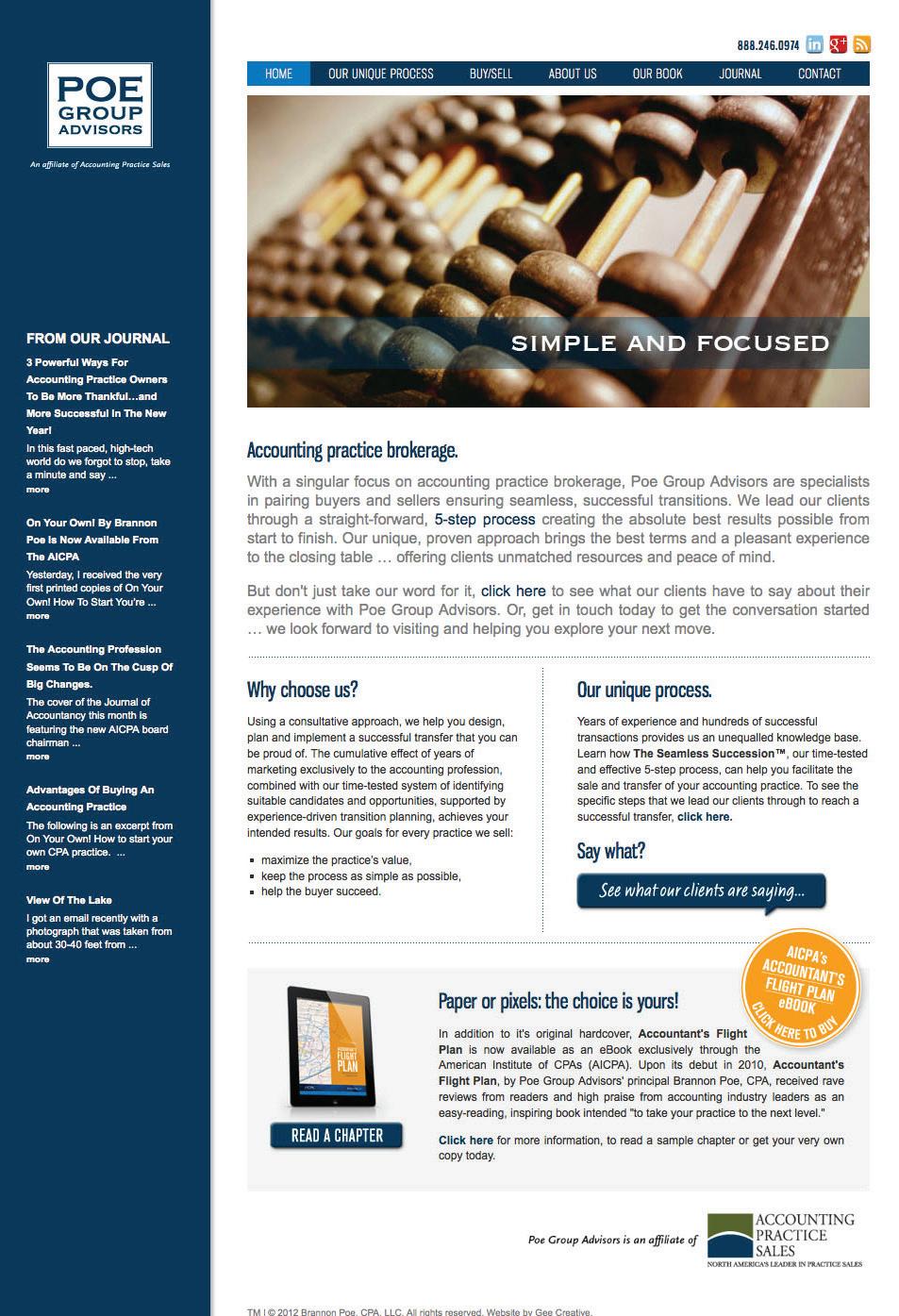













money on The Vine 14
More than 300 wineries sprinkled around the Commonwealth constitute big business in Virginia. Two CPAs share their winery know-how.

geT VolunTeering righT 18
Most CPAs have been asked at one time or another to donate their financial expertise to a volunteer organization. Make sure you know the rules.

a BraVe neW (healTh Care) WorlD 22
The Patient Protection and Affordable Care Act affects individuals and small and large groups in Virginia. Right now, it’s the law of the land.
CaughT in The inVesTmenT inCome Tax neT 26
Under Obamacare, high-income taxpayers will be subject to the 3.8 percent Medicare contribution tax on net investment income.
Virginia wineries and vineyards, along with related jobs and taxes, make up a $750 million industry. Who’s helping these businesses manage their finances? CPAs, of course.

A. berk, CPA
benefit Advisors
Take your LinkedIn profile to the next level
praCTiCe managemenT 12
Five guidelines for busy season success
The
Group Advisors
CoVEr PHoTo: The view from the restaurant at Chateau Morrisette, a Virginia winery in Floyd County.
published bimonthly for members of the Virginia Society of CPAs.
mission is to enhance the success of CPAs.
Virginia soCieTy of Cpas
4309 Cox Road
Glen Allen, VA 23060 (800) 733-8272
Fax: (804) 273-1741 www.vscpa.com
http://disclosures.vscpa.com
eDiTorial sTaff
Jill Edmonds
Managing Editor disclosures@vscpa.com
Chip Knighton Contributing Editor
cknighton@vscpa.com
Jenny Chu, CAE Marketing & Communications Director jchu@vscpa.com
eDiTorial TasK forCe
Joan D. Aaron, CPA
Lindsay S. Andrews, CPA
Adam G. Chaikin, CPA
David L. Cotton, CPA
Gary D. Dittmer, CPA
Elizabeth M. Helle, CPA
Clare K. Levison, CPA
Kevin S. Matthews, CPA David R. Peters, CPA
George D. Strudgeon, CPA
Thomas L. Visotsky, CPA
Articles and advertising for future issues are due by 5 p.m. on the following dates:
March/April 2014 Jan. 6, 2014
May/June 2014 March 3, 2014
July/Aug. 2014 May 5, 2014
Sept./Oct. 2014 July 7, 2014
Nov./Dec. 2014 Sept. 1, 2014
Jan./Feb. 2015 Nov. 3, 2014
Statements of fact and opinion are made by the authors alone and do not imply an opinion on the part of the officers, members or editorial staff.
Dogs Deserve Better is seeking a cpa to perform a very basic/simple audit for us at an affordable price. We are a nfp 501c3 in Va. and on a limited budget that rescues dogs from chained or penned environments nationwide, providing medical and mental rehab and prep for future adoption. I Will greatly appreciate anyone that could expeditiously perform this for us to contact me at your earliest convenience at 757 357 9292 or mark@dogsdeservebetter.org. Thank you for your consideration.
MARk HYRe FroM VSCPA.CoM >>We, the staff at the Virginia Board of Accountancy, are excited to have Jim Holland on the Board. Jim has been a passionate advocate for students at VCU and for the profession! Welcome aboard Jim! WADe JeWell Virginia Board of Accountancy, Richmond
from the TWiTTersphere >>
What are some challenges you face in leadership? Help our discussion with today's #VSCPA @VSCPANews Leadership PPACAdemy panel! — @EKIMOFFCPA
Fascinating, cautionary tale about the importance of estate planning, by Edith Weiss of @DHGLLP. @VSCPANews ow.ly/qId1u — @VIRGINIABIZ
I work with Lindsay and she is a professional in every respect. She is smart, takes the time to explain to others and has great listening skills. She is the ideal CPA for the job she does, which she does very well.
AnonYMoUS in response to a profile on Lindsay Andrews, CPA
Look out for the #DHG_GovCon team at @VSCPANews’ 4th Annual #Government #Contracting Conference today. ow.ly/qM1ll — @DHG_GOVCON
5 CPAs from our client @CSTGroupCPAs have been named to the @VirginiaBiz & @ VSCPANews Super CPAs list ow.ly/qnkhl — @VERASOLVE
bLoG: www.cpPPACAfe.com
CoNNECT: http://connect.vscpa.com
TWITTEr: @VSCPANews, @FinancialFit
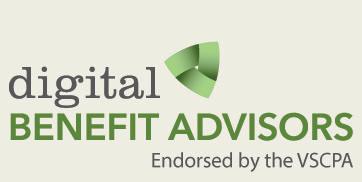
LINKEDIN: http://tinyurl.com/VSCPALinkedInGroup
FACEbooK: www.facebook.com/VSCPA
Get in touch at the Virginia society of Cpas, we love to hear from you. Whether it’s a quick email to a staff member, chat on the phone, disclosures letter to the editor, tweet, blog comment or something different altogether, let us know what you’re talking about, how you feel about different issues affecting Cpas and how we can help.
VSCPA members and staff meet with legislators during the Virginia General Assembly session in 2012. Visit the Advocacy section at www.vscpa.com for information on how you can attend CPA Assembly Day this January.
With the 2014 Virginia General Assembly session upon us, the VSCPA is ramping up its efforts to protect the CPA profession, including two bills introduced by the Society.

As always, the VSCPA supports the Virginia Department of Taxation’s (TAX) tax conformity bill, which conforms Virginia’s tax code with the U.S. Internal Revenue Code. This year’s conformity discussion promises to be a heated one following the joint announcement from the U.S. Internal Revenue Service (IRS) and the U.S. Treasury Department regarding taxation of legally married same-sex couples.
The VSCPA introduced two bills for the 2014 session:
Clarifying the exemption for CPAs in the licensing requirements for private investigators to preserve practice mobility.
Currently, the exemption could be interpreted to say that only CPAs holding Virginia licenses are eligible for the exemption. The bill, sponsored by Del. Chris Peace (R-Mechanicsville) would clarify that any CPA authorized to practice in Virginia is allowed to take advantage of the exemption.
The current lack of conformity creates a disincentive for Virginia companies to create a Virginia-based IC-DISC. Virginia corporations are creating IC-DISCs in competing states, taking business outside the Commonwealth. Sen. Frank Wagner (R-Virginia Beach) and Del. Ron Villanueva (R-Chesapeake and Virginia Beach) are the sponsors.
The VSCPA is also closely monitoring any tax reform proposals introduced. For more information or to alert the VSCPA to any other important issues, contact Government Affairs Director Emily Walker at (804) 612-9428 or ewalker@vscpa.com. n
The Virginia Board of Accountancy (VBOA) should establish a formal “inactive” licensure status for CPAs in Virginia, the VSCPA believes.
The VBOA has made it a priority to ensure all Virginia accounting statues and regulations align with the Uniform Accountancy Act (UAA) and related Model Rules. The UAA stipulates that states offer CPAs a CPE requirement exemption for “inactive” status — requiring them to use “inactive” after CPA in their titles, except on their CPA certificates.
While the VBOA currently offers an exemption for licensees who are not providing services to the public or an employer, it does not require the use of “inactive.”
This is confusing to licensees, the VSCPA told the VBOA in a Sept. 30, 2013, letter: “We believe the ambiguity of the current regulation creates confusion for licensees and the public as to when CPAs qualify for the CPE exemption.”
The VSCPA gave the VBOA recommendations, such as clearly defining which CPAs are eligible for inactive status.
Find the full letter in the “Advocacy” section of www.vscpa.com, under “VSCPA Positions.” n
The VSCPA has a new program benefit for members who need accounting and legal information fast. Through a partnership with NIQ, VSCPA members can use an online research tool to easily find rules, regulations, statutes, codes, tax case law, pending legislation and more — all from more than 2,500 sources. NIQ’s affiliate company services more than 200,000 attorneys with their legal research needs!

Before partnering with NIQ, the VSCPA reviewed the tool to ensure it is easy to use without training, and at a cost that any practitioner can afford. The tool retails for $79 per month, but VSCPA members receive the specially reduced rate of $46 per month.
Want to try it out first? Call or text (855) 647-8326 for the VSCPA member access code and discount. Visit https://www.niq-taxlaw.com/ memberprivileges/virginia.html for a free trial. n
land donations preserve and encourage permanent open and undeveloped land while keeping the ownership of that land private. For those concerned that land lost is land lost forever, conservation easements are a way to reverse that trend. Land restricted by a conservation easement is preserved in perpetuity. In Virginia, 6 percent of the land not owned by the federal government is currently subject to permanent conservation easements.
Advocates suggest that conservation easements do permanently what taxation based on land use assessment tries to accomplish every year. That is, they keep open spaces, improving the quality of our air, water and food. To their way of thinking, tax incentives are better spent on land conservation easements than other more temporary methods of land preservation.
To encourage such preservation, the Virginia Land Conservation Incentives Act of 1999 offered strong tax incentives. It allowed a landowner to claim 40% of the value of the easement as tax credits. So if the easement was worth $1 million, the land owner received $400,000 in state tax credits. The amount of the credit used by a taxpayer may not exceed $100,000 for 2012 and subsequent tax years, but any unexpended portion may be carried forward for the next 10 tax years. In addition, any unexpended portion may be transferred to another Virginia taxpayer. A recent tax court opinion suggests that the income from the sale of tax credits held for more than one year prior to sale may receive more favorable long-term capital gains treatment.
Donations of open-space easements that meet federal tax code requirements may entitle the donor to federal income tax deductions. For tax year 2012 (retroactively by the “fiscal cliff” legislation) and tax year 2013, the deduction is limited to 50 percent of adjusted gross income, which if not used up in 2012 or 2013, may be carried forward at 50 percent of adjusted gross income for an additional 15 years or until the donation is fully expended, whichever comes first. In addition, a farmer or rancher who has received in 2012 or will receive in 2013 more than 50 percent of adjusted gross income from the trade or business of farming or ranching is eligible for a tax deduction of 100 percent of adjusted gross income. IRS Form 8283 must be filed to obtain this deduction. Form 8283 requires attachment of a copy of the appraisal, an appraiser’s declaration and VOF’s acknowledgement of the gift. — NIQ Smart Brief n

After reading my last tip in Disclosures on how to remove title, date, etc. from an Excel report that was formatted for printing, a co-worker came to me with another issue that typically slows down an auditor when dealing with data they need to analyze that is not in a continuous block: report formatters remove data that repeats on every line. This is done to make reports easy on the eyes. For example, you may receive from a client an Excel report containing every transaction grouped by their respective account codes. The provider of the report may opt to just use an account code once by placing it on the line with the first transaction associated with it and then will leave the rest of the account code column blank until the report reaches the next account code. While this technique may add white space to the report, there is no way to run your own pivot table against the data without an account code next to each transaction.
If you find yourself in this scenario, here are five steps for adding a column with continuous data:
1. Insert a new column just to the right of the column that has the information you want to use in your analysis and blanks. In this example, we will assume that column A has account codes that are not repeated on each row and you just inserted a new column B.
2. In the new column (B), next to the top account code in cell B1, write the
formula =A1, which brings over that top account code into your new column. In my table, the top account code is in cell A1.
3. In the cell directly under the formula you just wrote (B2 for me), using the “IF” function, write a formula that checks for “blanks” in the account code column (A). If the cell in the account code column (B) is blank, the formula should return the value directly above the formula. On the other hand, if the account code has a value, the formula will return the value directly to the left of the formula in column A. In my example, in cell B2 I wrote =IF(A2="",B1,A2).
4. Copy and paste the formula you just wrote to every cell in column B until you get to the bottom of your data set. Just remember, you cannot use the auto fill function (e.g., double-click the box in lower right-hand corner of the cell) to copy down your formula because the column just to the left contains blanks. Excel only copies items down a column until it hits a blank in the cell to the left.
5. Your new column (B) should now contain an account code on every line. To ensure the account codes do not change in the new column (B), copy the new column (B) and then paste specialvalue only on top of the new column to overwrite your formulas with static amounts. Using values only will ensure the account codes do not inadvertently change as you do your analysis.
GEorGE D. STruDGEoN, CPA, CGFM, is an audit director at the Virginia Auditor of Public Accounts in Richmond. He is a member of the VSCPA Editorial Task Force. Have Excel questions you want him to cover? Email george.strudgeon@gmail.com.
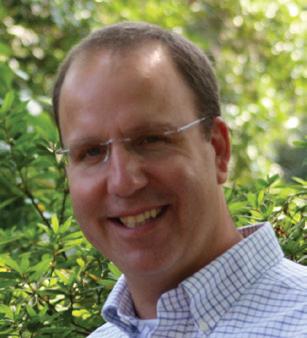
You may start analyzing with your continuous block of data. n
No SurPrISE HErE >>Statistics show the Commonwealth was the state hit hardest during last fall’s government shutdown. WalletHub conducted a survey in October to determine the nationwide effect of the shutdown. Not surprisingly, Virginia and Washington, D.C., have the most federal workers per capita and were thus disproportionately affected.

The states hit hardest, ranked behind Virginia, were Alaska, Alabama, D.C. and Maine. Maryland ranked sixth. In addition to having a large number of federal workers, Virginia, D.C., Maryland, Alaska and New Mexico receive the highest number of federal contract money per capita. That explains all the government contractors in Virginia who were also furloughed during the shutdown.
Check out the full findings from WalletHub at http://tinyurl.com/ k83zhw2. n
on a list of the 20 best college towns in America by Travel + Leisure, Virginia snagged five slots. Burlington, Vt., took the No. 1 spot, but these towns in the Commonwealth also earned accolades:
>> no. 2: Charlottesville — The University of Virginia’s hometown was noted for its history and music scene.
>> no. 4: Williamsburg — The town’s history is great, but so are its art scene and romantic hotels. Williamsburg is home to The College of William & Mary.
>> no. 5: Harrisonburg — Travel + Leisure calls the downtown of James Madison University’s home revitalized, with bike paths and good beer pubs.
>> no. 9: Fredericksburg — Mary Washington University and history abound in Fredericksburg, as do new restaurants and breweries.
>> no. 14: lexington — Home to both Washington and Lee University and Virginia Military Institute, Travel + Leisure calls Lexington a “livable,” quaint town.
Just how cool a state is Virginia to attend college in? Only two other states had multiple towns on the list. North Carolina and New York each had two. n

Foreign visitors spent a record amount in the Commonwealth in 2012, according to the governor’s office. That year, the most recent for which data is available, showed that tourism spending from overseas visitors climbed by 9 percent over 2011, to $425 million. Other tourism facts:
>> Domestic visitors spent $21.2 billion in Virginia in 2011.

>> Canadians are enjoying Virginia more, with overnight visitation by Canadians up 3 percent and spending increasing more than 4 percent. Canadians spent nearly $155 million.
>> During his term, Virginia Gov. Bob McDonnell made tourism marketing a priority. He promoted the Commonwealth during international marketing missions to the United Kingdom, Italy, Germany, Sweden, Israel, India, China, South Korea and Canada.
Scan the Qr code with your smart phone to access the easy-to-use mobile site from www.virginia.org. Links to dining options, events, deals and packages and more are at your fingertips. n

The number of children living in poverty in the United States in 2012, according to the most recent U.S. Census data. This equals nearly 22 percent of Americans under the age of 18. n
It is easy to take for granted the way the profession is today — and assume it’s always been that way. The fact of the matter is that ours is an evolving and dynamic profession. This occasional column will take a short stroll down memory lane and have a look at the way we were a quarter-century ago.
The first issue of Disclosures was published in November 1988. Disclosures succeeded The Virginia Accountant (TVA). A look at the final issue of TVA and the first issue of Disclosures reveals that “The Plan to Restructure Professional Standards” was a big focus of attention. One controversial element of the plan was a requirement that beginning in 2000, prospective American Institute of CPAs (AICPA) members would need to have earned 150 hours of college credit. The debate over this proposed requirement was sometimes heated.


Proponents of the proposed requirement said that being a CPA should be a “pearl of great price.” We should require more education to elevate our profession above the norm of a basic college degree.
Opponents argued that this requirement would simply deter young people from becoming CPAs. How many young students would be willing to delay entry into a profession by a year and at a cost of an additional year of tuition?
Some argued that such a requirement — if imposed — should stipulate the composition of the extra 30 credit hours and that such extra hours should be focused on accounting, finance or other technical subjects. Others argued that liberal arts credits should be allowed so that CPAs would be “well-rounded,” thereby overcoming the “bean-counter” stereotype.
The 150-hour requirement became a reality. Was this a good thing for the profession? Why? Why not?
Send us your view: Good thing or bad thing? Email your thoughts and perspectives to Disclosures Contributing Editor Chip Knighton at cknighton@vscpa.com. We will share the results and views in a future edition of Disclosures n
DAVE CoTToN, CPA, is partner at Cotton and Company, LLP, in Alexandria. He is a former VSCPA Board of Directors member and currently sits on the VSCPA Editorial Task Force. He joined the VSCPA in 1981. Contact him at dcotton@cottoncpa.com.
The cover of the last issue of The Virginia Accountant, September 1988.
The debut issue of Disclosures, November 1988.
Want to read these old issues in full? Check out the PDFs at www.vscpa.com/ VSCPAHistory.
 By Carolyn Thompson
By Carolyn Thompson
With two people joining LinkedIn every second of every day, the reach and power of professional social media networking can’t be overlooked.
Have you “Googled” anyone recently? How about yourself? Unless you have a searchable profile on a company website, or a personal website, it’s likely your LinkedIn profile is the first item that appears when you search for your name online.
What about when someone searches for a CPA? When potential clients are seeking your expertise in your geographic area on LinkedIn, will your profile be among the first results they see? Chances are your name won’t be at the top of the list, but you can take steps to increase the odds that they will find you by having a well-written profile that promotes you in your targeted geographic area and for your expertise.
Creating a strong LinkedIn profile doesn’t require any financial obligation to obtain measurable returns on your time investment. In fact, nearly 85 percent of the millions of LinkedIn users don’t pay to upgrade and use the free version of the social networking site with continued success.
If you don’t have a LinkedIn profile yet, visit www.linkedin.com and create one. Here’s the who, what, why, where, when and how of creating a compelling LinkedIn profile.
The summary/overview in your LinkedIn profile should introduce you to your targeted audience. Whether you are in public accounting or a corporate role, everyone has specific industry knowledge that they enjoy working on and/or are proud to be recognized for, such as
commercial real estate, import/export, manufacturing cost accounting or global energy. Creatively detailing your industry knowledge in your summary instead of presenting dry lists can drive business opportunities to you.
Details about your specific volunteer activities can also be shown in the interests area of your LinkedIn profile. Potential clients who value civic contributions as well as involvement in the professional community will take note of to which organizations you donate your time. Alumni groups, board positions, nonprofit volunteerism and professional membership associations should be listed here if your participation extends beyond basic membership status. Positions of leadership such as membership chair or educational chair indicates initiative and should also be highlighted.
WHAT: What is your area of expertise? What do you Want people to knoW you for? What types of referrals do you Want to receive?
If you are a tax professional with a specialty in international tax or a CPA with a particular emphasis in complex real estate partnerships, note these specifics in the summary area of your profile or in the descriptions of the jobs you have held.
Well-written descriptions of your current and previous work experience, including your specific accomplishments in those positions, shows others what you have done in the past and how you can help potential clients now. Identify what you want people to know you for. Whether your focus is in a client service capacity or as a consultant, showing how you have contributed to growth and/or created costsaving efficiencies will set you apart from your competition.
When someone searches for a subject matter expert in a certain area, the key words in your profile will lead them to you, but only if you have
Before you make any major updates to your LinkedIn profile, visit your settings tab to turn off your activity updates. This will stop the system from posting autonotifications to all your connections that you are updating your profile. You can always go back and turn that back on when you want your entire network to know you have made a key change, such as starting a new job.
input the information there for them to discover. The more details you show, the more likely you will appear on someone’s search. A company seeking a new controller may want someone with knowledge of Federal Accounting Standards Board Interpretation (FIN) No. 44 because they have a complex stock compensation plan. If someone searches for “CPA” and “FIN 44,” your name will only appear to them if you have those exact keywords somewhere in your profile. Similarly, a search for “CPA,” “controller” and “stock plan audit” will generate a completely different set of results. Be creative and detail your experience so it is worded to exemplify your skills and knowledge.
Virtual networking allows you to connect with people you haven’t yet had the opportunity to meet in person. Connecting with colleagues from your educational pursuits, former co-workers, supervisors, subordinates, friends and clients will increase your potential referrals. Visit LinkedIn for a few minutes a week and read the articles your peers and competition are posting to give you insights into industry trends and actively participate in online conversations about hot topics in your industry.
The more connections you gather, the more uninhibited access you have to research your prospects, clients and even your competitors. Did you know that the top 10 LinkedIn users have 36,000 first-degree connections? Twenty-two percent of users have between 300 and 1000 connections. Adding even one person to your connection list could increase your sphere of influence by hundreds.
Check out the groups tab under interests. Nearly 40 percent of LinkedIn users are members of at least one group and as many as nine groups. Participating in groups is a great way to gain exposure and momentum as well as identify trends in your industry and field. The amount of referrals you receive and interaction you have with other professionals with shared commonalities is amazing. Referring subject matter experts, offering your services or introducing a trusted service provider or vendor of yours to a colleague are only a few ways that you can helpfully connect with others.
WHEN: When is the Best tiMe to reach the largest audience With your updates? When can you find tiMe in your schedule for linkedin activity?
Research suggests successful social media users are posting at least three times a week, but daily is ideal. This research also indicates that most users are looking at LinkedIn on weekends, before and after work hours and at lunch during the week. Reaching your intended viewers during these peak times is an important factor to maximize the return on your time investment.
Rather than setting a reminder to log in every day to post an article or a job opening you saw available, consider using a free social media
If you don’t yet have a LinkedIn profile, what’s in it for you? Check out this Disclosures extra, “To Link In or Not Link In: That Is the Question,” at www.vscpa.com/LinkedInBonus.
management tool like HootSuite, which allows you to schedule posts in advance and time them for release during peak hours on any of your linked social media profiles at once. Taking an hour or so in the evening or on the weekend to create and schedule your updates for the week is considerably more efficient than stopping and starting your day to post information, and is very effective for individuals and/or companies seeking to harness the power of social media to grow their brand and business.
HoW: hoW do you Want others to perceive you?
Posting updates creates awareness. Whether you have been mentioned in a press release, have won a recent award, have published an article, are seeking referrals for a project you have or want to share a blog post on your website regarding a new accounting pronouncement, grab people’s attention by creating an interesting message to introduce your post.
LinkedIn is an important tool in any professional’s toolbox of success and will continue to be as your career grows and our marketplaces continue to evolve. No matter what you post, you are creating an image for yourself to potential clients and employers, so be smart about how you want others to perceive you. If you don’t post any updates at all, you are not embracing social media and the power of virtual connection. Posting articles that promote you and your expertise exemplifies your level of knowledge and commitment to your profession and enables others to make referrals that will enhance your business and career. n
CAroLYN THoMPSoN directs a large team of executive recruiters, talent acquisition and human resource professionals at Dixon Hughes Goodman, LLP. She is a certified career coach and has given workshops focusing on LinkedIn best practices. Read her blog at www.jobsearchjungle.com.
* Carolyn.Thompson@dhgllp.com Carolyn Thompson
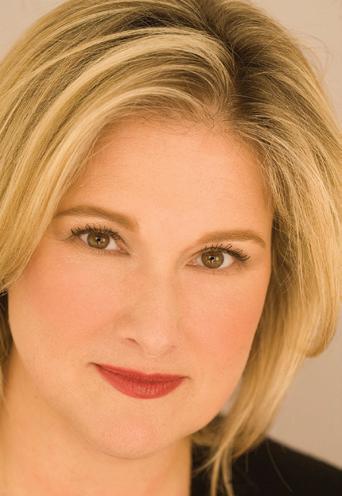
As you ramp up for busy season, have you given your service teams everything they need to be successful in the coming months? Are they prepared to give your clients an unparalleled level of service compared to your competition? Or is it business as usual (in other words, same as last year)?
This is a critical question partners and firm leaders need to ask themselves and honestly evaluate. And it probably wouldn’t hurt to get feedback from other levels within the firm as well, to see if their perceptions are congruent or if there’s a disconnection.
If you can answer “yes” to the first question above, great! The guidelines presented below should already be in your rearview mirror and will serve as a good reminder for next year. If the answer is no, it’s worth your time to read through the guidelines and determine if any lastminute actions can be taken to better prepare for what’s ahead.
With staff morale at some of the lowest levels I’ve seen in years (it’s tough to keep on doing more and more with less and less), combined with client expectations and fee pressures putting a bind on time capacity, every firm should be making sure they’re properly preparing their service teams and putting them in the best positions to succeed.
The following five guidelines are great January reminders for CPA firms. The term “service teams” refers to all staff, including partners and administrative staff.
I strongly recommend every firm at least update or, as I call it, “refresh” their processes each year. Incorporating key lean Six Sigma principles and concepts into your firm’s processes must be part of any new or updated process implementation. Each year, CPA firms are innovating their processes and ideas with breakthrough lean strategies, better integrating and utilizing technology and putting a greater focus on client value. We love when our clients are at the leading edge of process

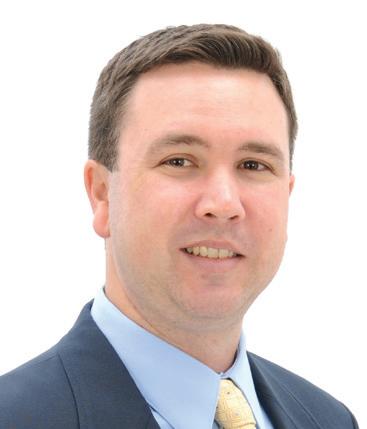
improvement! It’s important to keep in mind that you’re setting up processes that work for the vast majority of clients. If you only evaluate processes and procedures on a selective client basis, you’re not really setting yourself up for the opportunities available in gaining firm-wide efficiency and effectiveness. This is where I see many firms and different methodologies failing to deliver. They become so ingrained in the details of one engagement that they lose sight of the big picture and opportunities to leverage breakthrough lean strategies across all clients.
This really should come as the precursor to any refresher or process rollout meetings you have. It’s one thing to say what the process is, but it’s another to have visuals and references for your service teams to use and refer to during the heart of busy season and beyond. I like using both a visual value stream map, as well as a process document that is broken down into phases that describe what should be happening at each phase. These documents also serve as great training tools for your new team members during the year.
Make time for rollout sessions or schedule “refresher” sessions to present your processes for the coming year. Don’t take for granted that your service teams will execute a well-formulated plan and process that may have been created and implemented in a prior year. Plus, you want to be sure you get all of the new team members on board to fully understand their roles, expectations and accountabilities in the process. When you assume this will just be accomplished through osmosis, you’re setting yourself up for setbacks. Invest some time and get your people together for firm-wide or office-wide process refresher meetings. You’ll regret it later if you don’t. And please include everyone.
The refresher or new process rollout sessions serve as great opportunities to make sure your teams understand and are committed to consistently following the firm’s processes. The partner group (and managers), especially, should fully buy in to the processes and their roles. I usually recommend a separate session for just these groups when we’re initially rolling out a new process or updating an existing one, prior to introducing or refreshing to the entire firm. Whether they want to believe it or not, the firm is looking at leadership to lead by example. If timeliness and efficiency is demanded of others, it must be practiced at the leadership level as well.
A well-planned and orchestrated process rollout or refresher should garner feedback from partners. For example, a partner in a firm I recently worked with stated, “That session was the most well thought out and executed plan of a process we’ve ever had. All of our questions were addressed completely, and I feel better than I ever have about our processes rolling into the new year. In the past we gave lip service to understanding and buying into the process; this year I can confidently say you have our buy-in. I don’t see us slipping back into old ways.”
Decide what metrics you should be tracking to properly measure your process success. Many firms are beginning to use a hybrid of metrics, which include traditional ones like realization paired with more dynamic new lean metrics such as cycle time (turnaround time), throughput capacity and client value metrics. Make sure all of your service team members understand what these metrics are and make the results visible to keep your teams on track and working toward what is best for your clients and firm. Celebrate successes. Leaders — don’t forget to say thank you to your service teams. Those two words go a long way.
I hope you’re ready! Where does your firm stand with regard to accomplishing these guidelines? Hopefully they have already been completed. If not, identify where you may have fallen short and develop a short-term and long-term action plan to be on better footing down the road. If you haven’t embraced the lean concepts and methodology for developing, documenting, implementing and achieving world-class buy-in to your processes, what are you waiting for? Your people deserve to have good processes. And let’s not forget, your clients deserve and expect it as well. They want superior service and additional value added. If you don’t care enough, they can find other firms that do. n
DuSTIN HoSTETLEr is the founder of Flowtivity and the practice leader and lead consultant for Lean4CPAs by Flowtivity. Follow his blog at www.flowtivity.com/ flowtivity-blog/.
* Dustin@flowtivity.com flowtivity
Dustin Hostetler
Your people deserve to have good processes. And let’s not forget, your clients deserve and expect it as well.
 By Chip KnighTon
By Chip KnighTon
Over the past decade, Virginia wineries have sprouted up seemingly as quickly as the vines that blanket their fields, with nearly 300 now calling the Commonwealth home.

If you’re not distracted by a watering mouth and a desire for an outdoor table with a view, you probably thought, “Those wineries must be dealing with a lot of money.” And you’d be right — Virginia wineries and vineyards, along with related jobs and taxes, constitute a $750 million industry, according to a 2013 New York Times article.
And as always, anyone who is sitting on that big of a business is best served hiring a CPA to help manage it. We spoke with two VSCPA members working in the industry to get insight on the quirks that make Virginia wine — whether represented by liquid in a glass or numbers on a balance sheet — such a hot topic.
Lynn Carden, CPA, doesn’t drink. But her days are consumed by wine. The VSCPA member is the controller at Chateau Morrisette in Floyd County, a stone’s throw from the Blue Ridge Parkway an hour south of Roanoke. Carden, a Floyd native, has been a CPA for almost 20 years, starting out in public accounting before moving into the corporate world, where she specialized in technology, development and transportation. She made the switch to the wine industry two years ago when the job at Chateau Morrisette came open, offering her an opportunity to jump into a growth industry in her small hometown.
As with any move into a new industry, the change presented a learning curve for Carden. Accounting for wineries was more complex than her work at previous jobs.
“Every component has to be accounted for,” she said. “There are certain additives that go into the wine, so the winemaker has to enter that into our system. Then you have to add sugar and other additives that you have to account for, as well as labor. You have to allocate the cost of the bottle, the label, the cap, the cork. All of those are up-front costs.
“When you bottle the wine, you bottle it today and you expend a substantial amount of money on it. Then it might sit for two months or 18 months before you see any cash on it.”
The particulars of the wine itself are only the beginning. Chateau Morrisette, coming up on 40 years in business, is one of Virginia’s oldest wineries, and company leadership has expanded the winery’s offerings, adding a restaurant and tasting room and offering a facility for weddings and other celebrations. u


take a drive around the Charlottesville area or the western reaches of Northern Virginia and you can’t help but notice the signs, bearing names like Barboursville, Jefferson and Catoctin Creek.Chateau Morrisette in Floyd County is one of Virginia's oldest wineries.
— VSCPA member Lynn Carden, CPA, controller at Chateau Morrisette in Floyd County

he takes pains to make clear that he’s no expert on the vintages he enjoys.
He’s also an expert on a different aspect of the wine industry. Hudimac was working at Yount, Hyde & Barbour in Middleburg when the firm began attracting clients from the burgeoning Northern Virginia wine industry.
“The clients were referred to the firm, not necessarily to me,” he said. “I was one of the ones who gathered the skill set in order to deal with the unique characteristics of vineyards and wineries.”
Hudimac quickly became a go-to resource for new and expanding wineries in Northern Virginia and worked extensively in the industry from 1999 through 2010, when he started his own firm. During that time, he saw the industry expand like a vine taking over a hillside.
“Back when we first started working with wineries, there were not nearly as many of them as there are now,” he said. “Within probably a five-mile drive of my office in Purcellville, there are at least 25 vineyards and wineries, and most of those are less than five years old.”
Like Lynn Carden, Hudimac dove right into the complexities of bottling and selling wine.
wineries and vineyards than it is for very large wineries and vineyards.”
The accounting itself isn’t the only tricky part of running the business side of a winery. Virginia strictly regulates wineries with regard to who they can and can’t sell to.
“In the state of Virginia, a winery cannot sell their product directly to a local restaurant. They can’t sell 10 cases directly to a local restaurant,” Hudimac said. “They can’t sell 15 cases of wine to a local vintner or wine store. The state requires that they sell through a distributorship.
“The margins for small vineyards and wineries are fairly tight, and if you have to go through a distributorship, that takes another hit on your profit margins. A lot of wineries don’t sell through distributorships, so their revenue comes through their tasting rooms and VIP clubs.”
That’s been a major revenue stream for Chateau Morrisette as well, with management capitalizing on its picturesque Blue Ridge Mountains location in an effort to promote the winery — and Floyd itself — as a tourist destination.
“We are a seasonal business as far as the other aspects,” Carden said. “We’re very closely tied to the traffic on the Blue Ridge Parkway. I work with our marketing director to try to promote this as a destination. It’s not just coming to a winery — we also have a fabulous restaurant and a gift shop and music concerts.”
Tony Hudimac, CPA, is out of the wine business, but the grapes got their hooks in him just the same. He maintains an extensive wine cellar in his Loudoun County home, although
“You can treat it all as one complete activity,” he said. “In that case, you’re doing accrual basis for pretty much the whole thing — the growing of the grapes and the making of the wine. If you elect to bifurcate the two activities — one agricultural, one for the manufacturing process — you can treat the growing of the grapes as cash basis and the making of the wine as accrual basis.
“It’s mainly from a tax standpoint and cash flow basis that you would choose to bifurcate, to have cash basis and accrual basis. Then you can deduct the expenses currently for the growing of the grapes and capitalize the expenses into the cost of making the wine. If you treat it all as accrual basis, you’ve got to track and capitalize all the costs of growing the grapes into the barrel cost of the wine. It’s more advantageous to bifurcate for the smaller
“We have a restaurant and a tasting room,” Carden said. “We do festivals throughout the year, we do weddings, we do website orders. We’re a very complex business — I think the most complex business I’ve ever been involved in. We have so many aspects under the same roof.”
Those alternate revenue streams are necessary for wineries to boost their bottom line in an increasingly competitive market. Virginia vineyards do not produce enough grapes to fully supply all the state’s wineries, so producers must import grapes to satisfy production demands.
Virginia law strictly regulates the way wines are labeled. Any wine labeled as a Virginia wine must consist of at least 75 percent Virginia grapes.
“We’re a very complex business — I think the most complex business I’ve ever been involved in.”
“We love Virginia wines and we like to make as much 100 percent Virginia wine as we can,” Carden said, “but it’s not a reality. Virginia can’t support the volume of grapes needed. Both our general manager and our owner have talked with the Governor’s office and the Secretary of Agriculture about trying to promote that type of business in the state of Virginia — not just wineries, but vineyards.”
She added: “The federal and state mandates for what has to be legally put on a label are very complex. We’ve really been working on increasing our new products just as a strategic development and growth plan.”
As with any small business, such a plan is essential for long-term success — and it’s especially important for wineries, where an owner won’t see any return on his own grapes for years.
“From the time you plant roots to graft vines onto, it’s going to take three to five years to have your first full commercial crop and be able to make your wine with that grape and what those fields are going to produce on an ongoing basis,” Hudimac said. “Year two or three, you’re going to get some grapes off it, you’re going to be able to make some wine, but you’re not going to reach your full potential for about seven years.”
Even established wineries have to account for a wine’s maturing process.
“The wine can be bottled today, but because of the different varieties of wine, it may be ready to go to retail or wholesale in two months or 18 months,” Carden said. “In order for my cash planning and cash forecasting to know when I’m going to get the revenue for that, I have to understand the life process of that bottle of wine as well.”
Her company is expanding into new markets in an effort to maintain and grow its customer base. Chateau Morrisette recently signed an exclusive five-year agreement with China and is the first Virginia winery to export there.
And like many wineries — which tend to be located in attractive, pastoral locations — taking advantage of the surroundings is a big
Visit the digital issue of Disclosures at http://disclosures.vscpa.com to watch this embedded video of Lynn Carden discussing the winery business, or go to www.vscpa.com/LynnCarden.

part of staying in the black. Carden, who sits on the board of the Jacksonville Center, a local artist collective, is working hard to promote her hometown as a tourist destination. Long known as an attractive mountain getaway and a home for the counterculture in Southwest Virginia, the county is embracing that reputation, notably with the Floydfest music festival each summer.
“We work closely with the tourism board in Floyd to help promote events that happen in the area and bring tourism in,” she said. In the winter, it’s a slow time for the winery as well as Floyd. It’s become more of a summer destination. The country store has been in Smithsonian and The New York Times
“I just find it very exciting. It’s interesting that I can find more things to do here than I would have ever expected. Floyd has changed, and a lot of the people who have moved into the area have really promoted that.”
Winemaking requires a large plot of land, expensive machinery, specialized expertise and the liquidity to survive without seeing a profit for several years. So what makes a successful winery?
“The people who are doing it generally love
wine,” Hudimac said. “It becomes a passion for them, and it’s something that they enjoy doing. They figure that if they have a passion for it, if they enjoy doing it, they want to try to make their living doing it.
“They’ve got to have good business acumen, a good business skill set, to understand how to run the business. They pay attention to the details of your business. And you’ve got to make a good product.” n
KNIGHToN is communications specialist at the VSCPA, as well as contributing editor at Disclosures magazine.
* cknighton@vscpa.com connect.vscpa.com/ChipKnighton @ChipKnighton
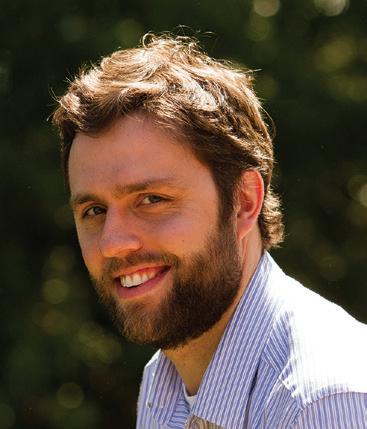

We all have been there before: A community organization (e.g., Girl or Boy Scouts, a community sports league, a religious group, etc.) interests you, and you go to an initial meeting to check them out. You introduce yourself and someone asks what you do for a living. You respond that you are a CPA, and the person’s face lights up like a Fourth of July extravaganza. “You’re a CPA, wow!”
They are a struggling organization that needs help with its finances, and you are now their “best friend.”
While many of my colleagues fear this situation, I relish it. It is rare to become involved in an organization in which I am passionate and can make a strong impact. The further away from the CPA profession we volunteer, the more prevalent the above situation is.
But this question may have hit you: What are my legal and moral responsibilities to an organization in which I volunteer? What if the organization asks me to provide attest services? In this environment, where everyone seems to be suing everyone else for small infractions, it is enough to make a sane person crazy and, worse yet, reluctant to volunteer. What are we to do, refuse because we don’t want to assist? Don’t let fear of your responsibilities stop you. The Virginia Board of Accountancy (VBOA) has the answers you need.
As an individual who regularly volunteers, I enjoy working with people to solve a wide range of issues (from organizational structuring to strategic management and leadership education, down to deciding whether or not an event qualifies as fundraising or program funding, etc.). I am involved in no fewer than 12 organizations, at a variety of levels from membership (just pay and show up from time to time) to fullblown leadership (head of one organization and treasurer of another). The idea of not volunteering would be crushing to me, especially if I was not allowed to volunteer using the skills that I use to make a living.
As a society, Americans see themselves as very charitable; it would run counter-intuitive to our culture to discourage people from volunteering. It would be even worse for small, community-based organizations not to have the expertise of a CPA, for the price of a volunteer, because of legal troubles. Good Samaritan laws prevent people with the best of intentions from being sued for trying to save a person’s life. Shouldn’t the same apply
to those who seek to steer small tax-exempt organizations around the maze of regulation and financial reporting?
You are in luck, especially if you live/work in or are licensed in Virginia. In 2012, the VBOA compiled a white paper, “Providing Volunteer Services as a Virginia CPA” (the guide), available at http://www.boa.virginia.gov/Docs/ VAEthics2012VolunteerServices.pdf. This guide is chock full of useful information to keep CPAs out of trouble, while at the same time allowing us to support good nonprofits with our most valuable resource: time.
Below, I review some of the nonprofit positions in which we can be called upon to serve and how the regulations apply to us. Remember though, specific circumstances that apply to your case may be different. Please refer to the guide for further information. The guide has a handy flowchart of activities related to the service of nonprofits and, if you follow it, you will stay out of trouble and your nonprofit will benefit from all of your expertise. u
You know what that means.
The most common role will be service as either a member of the organization’s board or as a financial officer (CFO, accountant, tax return preparation, etc.). In this role, the CPA will likely prepare financial statements, maintain the books, propose financial planning for the organization (investment decisions, buy/sell of organization assets, budgeting, etc.), in addition to many other related tasks. Personally, I encourage this, because it is a good way to keep some skills sharp that we might lose due to working at “higher levels” of statement review and audit. How many of us have to collect cash, record sales and record deposits? How many of us have to complete bank reconciliations? While I work primarily in tax, I would say that many people, especially those in a management position, might not perform these tasks on a regular basis. As these skills are perishable, volunteering is a good way to keep these skills sharp, without having to take a reduction in rank.
According to the guide: “In Virginia the law provides an exception to CPAs if they are performing the services in their role as an officer, employee, or member of the governing body of the entity or entities about whom the financial information is presented.” Generally, these roles will NOT be subject to peer review. Again, as mentioned before, refer to the flowchart and the guide in order to make sure that your work will not be subject to peer review.
You might be asked to compile financial statements, for either historical records or as a part of a prospective project. As a part of the presentation of historical financial information to management or the entity, in which you are not acting as an officer of the organization, you will likely have to comply with the requirements of AR Section 80, Compilation of Financial Statements. As such,
“You will be considered to be performing the compilation engagement as a firm organized as a sole proprietorship, and the engagement will be subject to peer review.”
When it comes to the preparation of prospective financial information “that meets the requirements for a complete presentation other than as an officer, employee or member of the governing body of the entity,” there is one key question: “Will the complete presentation be used by a third party?” If the answer is yes, you must comply with the standards of AT Section 301, Financial Forecasts and Projections for a Compilation Engagement. The engagement will be subject to a peer review.
Serving on the Audit Committee is a task that really seems right in line with those who perform audits in their regular work. As we will see later on, this can be a sticky point for CPAs, especially for those who do not regularly work in audit (like us tax geeks!).
Recently, I had to reject a request to perform an audit for a volunteer organization, of which I am a member but not an officer or board member, because of the peer review requirement. The audit would seem easy enough; there were two bank accounts and less than 30 transactions in the previous year. The fact that I would have done it for free does not matter; the law still applies.

As a CPA engaged to provide assurance of the financial data, the entire engagement could be subject to peer review under the law and U.S. Auditing Standards. Per the law, assurance about a presentation of historical financial information can only be given as the result of (1) an audit or (2) a review. Assurance about a presentation of prospective financial information can only be given as the result of (3) an examination under these services.
According to the guide, these services can only be performed by licensed firms, “unless the assurance is given by an officer, employee,
If you volunteer your CPA services for an organization, will you be subject to peer review? Maybe. Make sure you know the rules as set forth by the Virginia Board of Accountancy.
If a volunteer organization needs an audit/ review for legal or financial reasons, engage them as you would any other client. The work is subject to normal rules of audit engagement, even if you do it for free.
or member of the governing body of the entity of whom the financial information is presented.”
This brings up another point. Many organizations require an “audit” every year, every time they elect a new president/ treasurer, etc. The term “audit” or “review” can give rise to many legal concerns with regards to the level of assurance provided. While many organizations like to use the term “audit” or “review,” what they are really saying or meaning is “agreed-upon procedures.”
One thing that I have been doing with my organizations is have them amend their bylaws to replace the term audit/review with “agreedupon procedures.” While this may not be appropriate for all organizations, it may be a prudent change for smaller organizations that do not want to be on the hook for requiring audits and really do not need them.
Remember, above I stated the engagement could be subject to peer review. There are some exceptions to this as listed in the guide. Paragraph 19-21 of the guide mentions a situation in which a licensee could perform these services as a member of a committee. The committee is providing assurance and not the CPA specifically, thus “the service is not the practice of public accounting.” The guide goes on to say, “even though the licensee is a member of the group, subdivision 5 of §54.14414, prohibits the group from following the requirements of AT 201.” In English, this means that since the organization did not engage the licensee to perform the service and instead engaged a committee, the work is NOT
subject to peer review AND an independent level of assurance cannot be provided either.
Finally, you might be asked to audit the financial statements of a nonprofit. Plain and simple, this is the realm of financial audit/ review, and as such (per the flowchart), this service is subject to peer review. The lack of receipt of compensation does not affect this determination. Before you engage in this type of service, be sure you know the purpose of the audit/review. If they need an audit because the bylaws say they need one, the fix is simple: Change the bylaws. If they need an audit/ review because of legal/financial reasons (bank loans, statutory regulations, etc.), engage them as you would any other client, subject to normal rules of audit engagement.
Remember: Rules of independence still apply. As an owner, officer, employee or member of a governing body, YOU ARE NOT INDEPENDENT, and as such, the services cannot be provided. Refer to Attachment No. 2 of the guide for a really great and wellpresented chart of services that shows which can be provided and which cannot.
When I worked in venture capital as an intern, the vice president of the firm said, “People love to help, and as such will often give it whenever they can.” As Americans, we are proud of those who serve their community, be it as members of the Uniformed Services (all seven branches; yes, there are seven) or as community volunteers. As it stands, the law
provides structure that allows you to serve organizations in a capacity in which you can benefit them, and in turn, they benefit you through service and networking opportunities (the partners of your firm will really like this).
Familiarize yourself with the VBOA guide and ensure that you volunteer within the structure provided. It will ensure that all involved benefit from your generosity. n
KEVIN S. MATTHEWS, CPA, PHr, MbA, MACC, is currently a doctoral candidate in The George
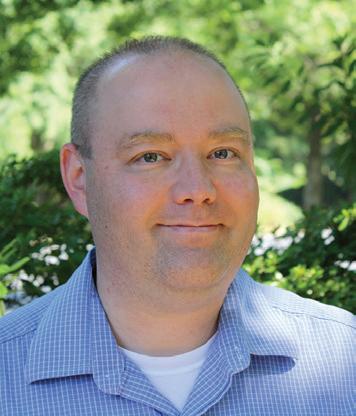
Washington University’s Executive Leadership Program, focusing on leadership and decision making. His dissertation topic is the role of sensemaking in ethical decisions. He also served eight years in the U.S. Navy as a naval flight officer and manages the Facebook page “Military Taxation.”
* kmatthews2@hotmail.com
connect.vscpa.com/KevinMatthews
 By Brian marKs, mBa, CeBs
By Brian marKs, mBa, CeBs
the Patient Protection and Affordable Care Act affects individuals and small and large groups in Virginia.
When the Patient Protection and Affordable Care Act (PPACA) was enacted on March 23, 2010, many businesses and those in my industry had a lot of trepidation. Many felt that it would never survive to implementation. The first major challenge centered on the bill’s constitutionality, which opponents felt would be its demise. But in June 2012, the U.S. Supreme Court ruled that the PPACA would stand. Opponents held out hope for the election in November, but with the re-election of President Obama and Democratic control of the Senate, it became clear that the PPACA is here to stay.
At the end of the day, the PPACA is the law of the land — with its roughly 2,000 original pages multiplied many times over with clarification upon clarification. I think everyone would agree, whatever his or her original stance on the PPACA, that this law is far-reaching and complex.
The PPACA’s impact has been immense. Its plan is to provide all Americans with access to affordable health care coverage. Sweeping reforms of the insurance industry deliver affordable care in some situations and greater expense in others. In short, the direct impact of the PPACA is quite situational.
The PPACA has altered the various segments of the health insurance market in different ways. The effects are similar among segments and unique to some. I will attempt to cover the major impacts it has had, and will have, on each segment. This is a high-level summary of the key changes, and there are certain concepts and impacts which clearly go well beyond the scope of this article.
Effective Jan. 1, 2014, all Americans will be required to have health insurance or pay a tax. This tax is the greater of $95 per adult/$47.50 per child or 1 percent of the taxpayer’s gross income in 2014. This tax increases in subsequent years. In addition,
there is no medical underwriting, all coverage is guaranteed issue (i.e., no denial) and pre-existing conditions are fully covered. Individual underwriting has changed significantly with the PPACA. Key changes are:
• No medical underwriting or risk adjustment
• Age-band ratios can be no larger than 3:1 from the youngest to oldest
• Tobacco users may receive a 50 percent surcharge
These underwriting changes favor the elderly and those with medical conditions. We have seen major cost impacts to the young and/ or healthy and better rates for those who are older and/or have higher medical risks. Essentially, the rates have normalized to the mean.
There is little that an individual who is younger and/or has lower medical risks can do to avoid these increases at some time in 2014, unless he or she is in a grandfathered plan.
A grandfathered plan is one that was issued prior to March 23, 2010, when the PPACA was signed into law. To be grandfathered, a plan could not have been altered significantly since this date (e.g., certain increases in deductible). If the plan is grandfathered, the aforementioned underwriting changes will
not apply. If you are insured in the individual market, your carrier can tell you if your plan meets these criteria. If an individual has a low medical risk and/or is younger age, he or she may wish to maintain this plan as long as practicably possible. Otherwise, there will be significant rate changes due to the PPACA.
If a member in the individual marketplace is older or has medical conditions, he or she may be aided by these same PPACA underwriting changes. If the demographics or medical risks warrant it, an individual may wish to move to the new underwriting as soon as possible in 2014 to enjoy the lower rates that are available under the PPACA. The advantage or disadvantage of the PPACA underwriting changes is situational.
Beyond the underwriting changes, individual plans are offered in both the private market and through public marketplaces. Virginia is a part of the Federally Facilitated Marketplaces (FFM), which are vehicles where individuals can shop for qualified plans. If an individual is between 100 and 400 percent of the federal poverty level and does not have access to an affordable and/or minimum benefit level plan, they may be eligible for federal subsidy. These subsidies are based upon the second lowest “silver level” health care plan available in the Marketplace. The subsidies provide a maximum payment level for a non-tobacco user, which ranges from 2 to 9.5 percent of u
income. These subsidies are only available to purchases made through the Marketplaces. To learn more about subsidy eligibility, check out the subsidy calculator developed by the Kaiser Family Foundation at http://kff.org/ interactive/subsidy-calculator/.
If an individual chooses to not purchase through the FFM in Virginia, he or she can purchase directly from the insurers who are offering individual policies. An individual may wish to obtain coverage outside of the Marketplace for a broader product selection. Many of the carriers in the Marketplace are offering limited product selections or plans with a smaller provider network than they traditionally would. My experience has been that in Virginia the only people utilizing the FFM are those who will likely receive subsidy.
A small group in Virginia is defined as an employer with at least two but less than 50 full-time equivalent (FTE) employees. There have been significant changes in the underwriting of this market as well. The key changes are:
• No medical underwriting or risk adjustment
• Age-band ratios can be no larger than 3:1 from the youngest to oldest
• Tobacco users may receive a 50 percent surcharge
Conversely, groups with poor medical risks or older ages may seek to re-enroll under the post PPACA underwriting to take advantage of better pricing due to no medical underwriting and age band compression. The new community rates should be quite advantageous in certain situations. Groups will need to weigh the advantages and disadvantages of changing their renewal dates. Any employee amounts accumulated toward deductibles and out-of-pocket maximums will be reset. However, if the savings are large enough, this could be warranted.
Want to know more about health care reform and its effect on the accounting world? Join us on May 19, 2014, at the Williamsburg Lodge for the 3rd Annual Health Care Industry Symposium. Find out about the state of the health care industry in Virginia and connect with nationally recognized experts in the health care accounting field. Visit www.vscpa.com/HCIS for more information or to enroll.
Much like the individual market, these changes have led to varying effects on groups, depending upon their demographics and medical risks. Younger groups with less-thanaverage medical risks are being negatively affected from a rating standpoint, while older and/or high-risk groups are affected more favorably.
Groups with favorable risks may wish to pursue a strategy of self-funding, which will still allow for medical underwriting in 2014. This could lead to lower rates than we will see in the broader community-rated market. Self-funding in this context is greatly simplified, as compared to large group selffunding, with the carriers offering a turn-key approach. Essentially, a group is funded at the “worst case” scenario, and then if their claim experience is favorable to projections, some of the gains are returned. In addition, this approach also leads to more traditional rate structures of employee, employee plus spouse, family, etc. Under the PPACA, each employee receives a rate based upon their age with dependent/family rates being a compilation of each member’s individual rates. These new age rating tiers are stated in one-year bands from ages 20 to 64. This is much more complicated to manage than the current rate tier structure to which we are now accustomed.
Large groups are those with more than 50 FTEs in 2014, but the large group employee number requirement will change to 100+ in 2016. Right now, the overall effect on these groups is minimal. Employers are not required to provide coverage or face a penalty until January 2015, which is a delay from the original 2014 timeline. This is commonly referred to as the “play or pay” penalty. The penalty is $2,000 per employee minus the first 30 employees if there is no coverage offered, or if the coverage offered does not meet the minimum benefit level of bronze-level coverage. Bronze coverage is considered to be 60 percent actuarial value (i.e., 60 percent of medical costs are paid by the plan). Most of the employers I speak with are surprised at the relatively low level of coverage under the requirement. For example, a $5,000 high deductible health plan (HDHP) that pays 100 percent after the deductible generally meets this criterion.
For coverage requirements and penalties, the PPACA defines an employee as an individual working at least 30 hours a week on average.
Determining whether an employee is benefiteligible can be complex. The PPACA has many variables to measuring employees’ work hours, which go well beyond scope of this article. The actual calculation requires a full analysis by a competent employee benefit consultant.
When it comes to “pay or play,” the more difficult measure is affordability. If a 50+ employer offers a plan that is at the aforementioned minimum benefit level, it must also be affordable to avoid any possibility of penalty. The affordability penalty’s safe harbor is based upon an employee’s premium cost of the lowest level plan offered not exceeding 9.5 percent of the employee’s Box 1 W-2 wages. If the expense exceeds this limit, forcing an employee to seek coverage from the Marketplace and receive a subsidy, the employer could receive a $3,000 per employee penalty for any employee in this situation.
Employers in this segment have several things to do to prepare for 2015:



1. Determine if you are a large employer (i.e., have more than 50 FTEs)



2. Determine if you will offer coverage. If so: a. Does your plan meet the minimum-value requirement? b. Is your plan affordable?
3. If you decide not to offer a plan, you must calculate your penalty.
Your employee benefit consultant should be able to assist with these decisions. The determinations of employer size, FTE calculations, minimum-benefit levels and affordability can be complex. This is an
Your dedicated Digital Benefit Advisors team of experts will guide you through how to make the most sound benefits decisions for your business and your clients.
Brian Marks, Executive Director P: 877.998.7272 www.digitalbenefitadvisors.com/vscpa
According to legend, an ostrich will shove its head in the sand when confronted with something unpleasant. I think you’ll agreeprobably not the best approach.

9954 Mayland Dr., Ste. 2200, Richmond, VA 23233








instance where it is not wise to “go it alone.”
The impact of the PPACA has broad and varying effects on employers and individuals. One’s perception of whether the PPACA’s mandated changes are positive or negative is situational. My opinion is the PPACA is here to stay in one form or another. The landscape and the law will surely change as time moves forward, and the degree of this change will likely be the result of public opinion and the country’s fiscal limitations. Nonetheless, as individuals and business people, we need to move forward with the situation as we know it to be today, not how we how we hope it will be tomorrow.
Fully analyze your situation and maximize your positioning. In any case, there are activities you can undertake to manage your situation this year and in the future. Never has there been a time when is it so important that you seek help from qualified employee benefit advisors. The complexity that has now become a part of the health insurance purchasing decision warrants more analysis and better advice than ever before. To ensure you are positioned well now and prepared for the future, you and or your organization will need to seek answers and options. n
brIAN MArKS, MbA, CEbS, manages the efforts of VSCPA Benefit Advisors, the VSCPA’s endorsed insurance advisor. He has 22 years of diverse health insurance and employee benefits experience.
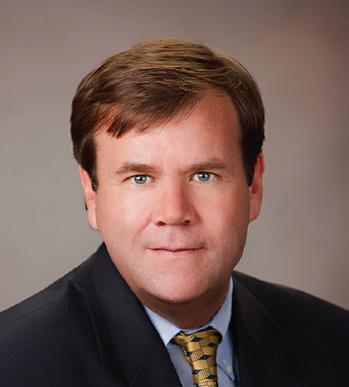
* bmarks@digitalbenefitadvisors.com
Endorsed by the VSCPA


A new 3.8 percent tax, mandated in health care reform, will snag highincome taxpayers.
By Jennifer f flinChum, Cpa, Cfp® anD samuel Baronian iii, CpaThis new tax is part of the Health Care and Education Reconciliation Act of 2010 (the Act), more commonly referred to as Obamacare or the Affordable Care Act.
President Obama and Congress instituted the Act to generate an additional $200 billion over 10 years and $1 trillion over the following decade to help pay for health care reform. The intended benefits of the Act have been highly debated among members of Congress and the general public since its inception. The Act has left many business owners and taxpayers concerned about increases in health insurance premiums, higher taxes and a potential reduction in cash flows.
Many taxpayers, absent changes in income from 2012, will incur higher tax bills in April 2014 when they file their 2013 income tax returns as a result of this new legislation. Tax preparers should anticipate that additional time will be required to complete 2013 tax returns and compliance costs associated with tax return preparation are likely to increase.
Individual, estate and trust taxpayers will calculate and report their net investment income and Medicare contribution tax on Form 8960 released by the U.S. Internal Revenue Service (IRS) in August 2013. Instructions for this form are still pending release.
Net investment income includes a wide range of investment income and is not limited
to investment income reported on Forms 1099. In fact, the IRS regulations that define net investment income are more than 150 pages. The wide reach of this new tax will include interest income; dividends; annuities; royalties; rents; gains from the sale of stocks, bonds and mutual funds; capital gain distributions from mutual funds; gains from the sale of real estate held for investment; and passive activity income.
Passive activity income is generally related to rental activities or trade or business activities in which the taxpayer does not materially participate. Passive activities can be organized in many forms, but most commonly as limited liability companies (or partnerships) or S corporations. In some instances, certain passthrough entities may generate both active and passive income. The rules regarding whether an activity is considered passive or active can be complex. If a taxpayer recognizes a gain from the sale of a passive activity, that gain is also subject to the 3.8 percent tax.
Finally, if there is taxable gain from the sale of a main residence (a gain over and above the $250,000 or $500,000 exclusion), that amount is also subject to the 3.8 percent tax. If the gain is fully excluded, the taxpayer will not incur income tax nor the 3.8 percent tax.
The 3.8 percent Medicare contribution tax also applies to trusts and estates. The tax equals the lesser of the trust’s or estate’s (1) undistributed net investment income or (2) the excess of adjusted gross income over
the statutory threshold amount of $11,950. This threshold is substantially less than the applicable threshold for individual taxpayers. If the trust or estate distributes a portion of its income, then the beneficiary will likely be taxed on the portion distributed. On the other hand, if the trust or estate retains a portion of its income, then the trust or estate will likely be taxed on the portion retained. Therefore, the income from the trust or estate will be taxed at either the trust level or the individual level depending on the amount of trust’s or estate’s income that is distributed.
If the trust document permits, it may be prudent to distribute more income to beneficiaries rather than retain the income inside of the trust because the thresholds for individuals, for purposes of calculating the net investment income tax, are much higher as compared those for trusts and estates. This assumes the beneficiary’s higher 3.8 percent tax thresholds would minimize overall tax liability. It should be noted that most capital gains are taxed within the trust and cannot be passed through to beneficiaries.
The new 3.8 percent tax on net investment income applies to individual, trust and estate taxpayers who meet certain statutory income threshold amounts. This tax will affect individual taxpayers whose modified adjusted gross income (MAGI) exceeds the u
beginning in 2013, high-income taxpayers will be subject to a new form of tax referred to as the 3.8 percent Medicare contribution tax on net investment income.
following thresholds: $250,000 — married filing joint (MFJ) and surviving spouse; $200,000 — single and head of household; $125,000 — married filing separately. For most taxpayers, MAGI will be the same as adjusted gross income (AGI, the bottom line on Page 1 of Form 1040). These thresholds are not indexed for inflation and, as a result, more taxpayers will be subject to this tax in future years.
The new tax will apply to the lesser of (1) net investment income, or (2) the excess of MAGI over the applicable threshold amount referenced above. The net investment income tax is a supplementary amount of tax added to a taxpayer’s income tax liability, and will apply regardless of whether the taxpayer is subject to the Alternative Minimum Tax or not. Following are a few examples to illustrate this new tax. For simplicity, we have assumed that there are no deductions allocated to investment income. Therefore, for these examples only, gross investment income equals net investment income.
Tim and Mary are married and file a joint return. Their AGI totals $300,000: Tim’s wages of $200,000; Mary’s wages of $60,000; $5,000 of interest income and $15,000 of dividend income from a brokerage account held jointly; and $20,000 of rental income received from a family limited partnership. Neither spouse actively participates in the family limited partnership. The couple will incur the additional 3.8 percent tax on the lesser of their investment income: $40,000 (composed of $5,000 interest income; $15,000 dividend income; and $20,000 rental income) or the excess of their MAGI over the applicable threshold amount equaling $50,000 ($300,000 MAGI less $250,000 threshold for married filing jointly). Consequently, their additional tax due is $1,520 (40,000 x 3.8 percent). This tax is due with the filing of the Form 1040, but should be taken into consideration throughout the year for purposes of determining the need for quarterly estimated payments.
James and Kristen are married and file a joint return. They formed a family owned business more than 30 years ago and have since retired and do not actively participate in the business. They have other income of $250,000 that is not considered net investment income. The business is an S corporation and they still own 100 percent of its stock. The business generates profits of $500,000 in 2013, which is characterized as passive income to James and Kristen. The couple will incur the additional 3.8 percent tax on the lesser of their investment income: $500,000 (S corporation income, which is passive) or the excess of their MAGI over the applicable threshold amount equaling $500,000 ($750,000 MAGI less $250,000 threshold for married filing jointly). Because passive income received from a partnership or S corporation constitutes investment income for purposes of the 3.8 percent Medicare contribution tax, the couple will incur an additional tax due of $19,000 (500,000 x 3.8 percent) when filing their 2013 return. Alternatively, if the couple actively participated in the family business, their passthrough income received from the business would not be subject to the 3.8 percent tax.
Dave is single and earns wages of $500,000 from a medical practice. He also owns five rental homes that produce net rental income of $50,000. In this case, Dave will owe an additional amount due of $1,900 (50,000 x 3.8 percent) with his 2013 tax return. This is calculated as the lesser of his investment income: $50,000 or the excess of his MAGI over the applicable threshold: $350,000 ($550,000 MAGI less $200,000 threshold for single filers).
The following forms of income are not subject to the 3.8 percent net investment income tax: wages, tax-exempt interest and dividends, self-employment income, income from active trade or business activities, Social Security benefits and distributions from a retirement plan such as an IRA or pension. Keep in mind, however, that these income sources may
increase MAGI over the income threshold and trigger the net investment income tax as a result (as in Example 1).
John and Julie are married and have combined wages of $225,000 and IRA distributions of $200,000. They have no net investment income. Even though their MAGI is over the $250,000 threshold for married filing jointly (MAGI is $425,000), they do not incur any net investment income tax.
Kevin and Courtney are retired and have AGI of $260,000, composed of a $100,000 IRA distribution, $50,000 of Social Security benefits, $70,000 of dividend income from a brokerage account and $40,000 of rental income from a vacation home. The couple has investment income of $110,000 composed of $70,000 of dividend income and $40,000 of rents. Their IRA distribution and Social Security benefits do not represent investment income for purposes of the 3.8 percent Medicare tax. They will owe an additional $380 with their return (10,000 x 3.8 percent), the lesser of their investment income: $110,000 or the excess of their MAGI over the applicable threshold: $10,000 ($260,000 MAGI less $250,000 threshold for married filing jointly). In this case, Kevin and Courtney will pay the additional 3.8 percent tax on a minimal portion of their investment income since their MAGI only slightly exceeds the threshold.
Taxpayers are permitted to deduct certain investment expenses to arrive at net investment income, such as investment interest expense, investment advisory and brokerage fees, expenses attributable to rents and royalties and an allocable portion of state and local income taxes. As a result, investment interest expense will be a more desirable deduction for taxpayers beginning in 2013 as compared to past years because it can be deducted while computing the taxpayer’s income tax and net investment income tax. Keep in mind that investment interest expense
is still subject to certain limitations (limitation calculation on Form 4952) and also subject to the phase-out of itemized deductions.
Trust A has one beneficiary and generates dividend income of $150,000 and capital gains of $100,000 in 2013. No distributions were made to the beneficiary in 2013. In this case, the trust will be subject to an additional tax of $9,046 [($150,000 dividend income plus $100,000 capital gains less $11,950 threshold) x 3.8 percent] on net investment income. If the trust instead distributes all of the dividend income to the beneficiary, who has no income from other sources, then the trust will pay the additional 3.8 percent tax of $3,346 [($100,000 capital gains income — $11,950 threshold) x 3.8 percent], a savings of $5,700. Assuming this is the only income of the beneficiary, he or she would not be subject to the 3.8 percent tax on the dividend income received from the trust on his/her personal return because it does not exceed the threshold at the individual level — $250,000 for joint filers or $200,000 for single taxpayers. A thorough review of the trust document should be done to make certain that the distributions are permitted.
There are several strategies available to taxpayers to reduce exposure to the 3.8 percent tax. First, they can maximize contributions to a retirement plan, such as a 401(k) plan, IRA, SEP, etc. Contributions to retirement plans, other than Roth plans, will reduce current MAGI for purposes of calculating net investment income, and withdrawals from a retirement plan are excluded from the 3.8 percent tax. Having a Roth retirement account, while not reducing current MAGI for contributions, may help to reduce MAGI in the future as the distributions from Roth retirement accounts are excluded from income tax, excluded from the 3.8 percent tax and do not increase MAGI. Secondly, clients should consider investing in tax-exempt securities since they are not subject to the 3.8 percent tax.

Third, review the classification of business ventures to be certain they have been properly classified as either active or passive. Passive activities may be able to be recharacterized or aggregated to reduce passive income. Other strategies include deferring receipt of retirement income (assuming it is not a Required Minimum Distribution), deferring receipt of Social Security income, utilizing non-qualified deferred compensation plans, deferring recognition of certain gains into a year when income is lower, considering changing investment portfolio allocations to focus on growth stocks instead of dividend paying stocks if current cash flow is not an issue, recognizing capital losses, reporting capital gains on the installment method, utilizing like-kind exchanges to defer gain and maximizing depreciation deductions attributable to rental activities. As suggested earlier, taxpayers might consider adjusting their withholdings or estimated tax payments to account for the increase in tax to avoid underpayment penalties.
The new 3.8 percent Medicare contribution tax will present challenges for both taxpayers and tax preparers as we work together to understand all of its implications. We will need to develop integrated investment and tax strategies that not only meet savings and growth objectives while managing needed cash flow, but also reduce both short-term and long-term tax liabilities. n
JENNIFEr F. FLINCHuM, CPA, CFP®, is a tax partner at Keiter in Glen Allen.
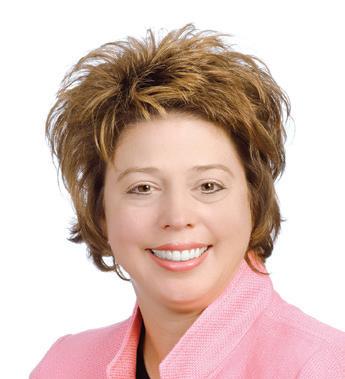
SAMuEL bAroNIAN III, CPA, is a supervisor at Keiter.
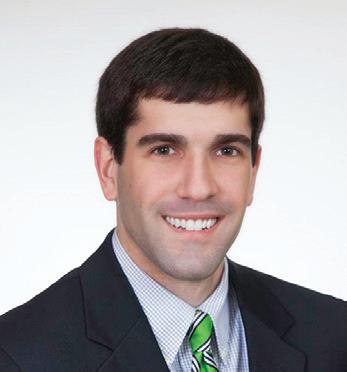
* jflinchum@keitercpa.com.
* sbaronian@keitercpa.com
Income thresholds for the tax on net investment income are not indexed for inflation. More taxpayers will be subject to this tax in future years.
Who really chose who in joining your company?
Are you/your professional staff really at the right level where you should be/you need them to be?
Are you/your staff in a position that truly suits your/their personality, values, and professional and personal needs?
If you’re seriously interested in making the “right” move for your next hire, I can help you. I am an actively licensed CPA in Maryland and Virginia with over 20 years of experience including public accounting (E&Y) and consulting (KPMG), financial accounting (American Cancer Society), internal audit (Moneyline Tele rate), and recruiting (Acsys, formerly Don Richards). As a networker who truly enjoys helping others and sharing my career experiences to guide fellow professionals, here is how I can help you:
Ask you questions, and most likely ask many more questions than other recruiters about your company, duties involved, skills required, corporate culture and more
Work with you on finding the “right” professional that is the “right fit”
Provide you with valuable information about the professionals I work with, the marketplace, what your competitors pay, and more
Guide you on career paths available in public accounting and industry
Enable you to capitalize on your strengths
Coach you on how to put your best foot forwa rd to find the “right fit”
Advise you when to stay in your current position if that is the right move
If you’re interested in working with a recruiter who understand s your background, skills, and is genuinely interested in helping you find the
right fit
Recruiter
in CPA Firm,
Metropolitan DC & Nearby Suburbs/B
for the state of Maryland,
and professionals as an
then I welcome meeting you!
the call from the governor’s office came as something of a surprise for VSCPA member Jim Holland, CPA. The answer he gave was no surprise at all.
Holland wasted no time in accepting his appointment from Gov. Bob McDonnell to the Virginia Board of Accountancy (VBOA). It’s just the latest venture in a lifetime spent serving the Virginia citizens.
“I really look forward to serving the CPAs of Virginia, working with them and serving the public,” he said. “I think it’s a wonderful opportunity to serve a really great profession and the residents of the Commonwealth of Virginia who rely on the expertise of CPAs.”
Holland is no stranger to public service, having spent the past six years on the Chesterfield County Board of Supervisors, where he serves on the Budget and Audit Committee. It’s a natural progression from a lengthy accounting career to county government to his new spot on the VBOA.
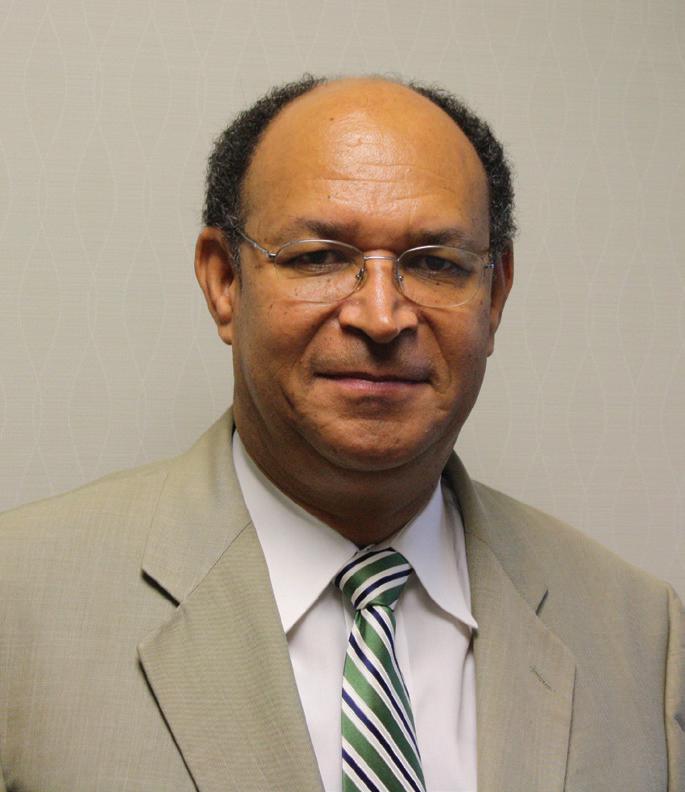
Holland brings a wealth of experience to the VBOA, having spent nearly three decades in industry with Philip Morris. He’s also worked as a sole practitioner and a professor in the business school at Virginia Commonwealth University (VCU).
“I bring a broad perspective, probably more than most CPAs have,” he said. “I have industry experience, more than 27 years in industry, and more than 20 years as a sole practitioner. I’ve been practicing for the last three years with Holland and Brown. Also, I bring a wealth of experience in education. I advise students who want to become CPAs. It gives me an opportunity to better serve them.”
Wearing all of those hats — supervisor, regulator, educator and CPA — means that Holland has a lot on his plate, but can draw from that diverse background. His wife, Judith, brings her own perspective to the family — she’s an accounting teacher at Meadowbrook High School in Chesterfield.
“She gives me a great perspective from the high school level,” he said. “As a result of her being in high school, I can shape policy that really helps to shape high schools. Having her there helps me know the importance of accounting in high school. That’s something we really need to focus on.”
The two-educator family is a reflection of Holland’s childhood and the challenges his parents faced growing up black in Jim Crow-era North
Carolina. Holland, who served on the Virginia Public School Advisory Board under Govs. Mark Warner and Tim Kaine, has made it a priority to protect Chesterfield’s educational infrastructure and county residents’ access to quality schools.
“My father passed away when I was 13,” he said. “I was really raised by my mother on a small farm in North Carolina. In our county, there was no high school when my mother was studying, so she had to curtail her dreams of going to high school, which prevented her from going to college and fulfilling her dreams of being a nurse.
“I made it a personal mission to ensure that everyone can have an opportunity for an education to contribute to society.”
Holland took that philosophy to heart, earning his bachelor’s degree from Fayetteville State University and his master’s in business administration from North Carolina Central University. As is the case with so many CPAs, he followed a professor’s good advice into the accounting field.
“I went [to college] to study management. A professor told me that if I studied accounting, I’d always have a job,” Holland said. “You know what? He was right.”
For Holland, one of the most gratifying aspects of the CPA profession is the integrity the designation implies and the practitioners fulfill. He strives to live that value in other areas of his life — he’s a deacon and a Sunday school teacher at First Baptist Church Centralia — and keeps it in the forefront of his mind in his professional dealings.
“I heard a story several years ago that when someone is at the end of life, they want two people — a priest and a CPA,” he said. “So the CPA ranks pretty high in terms of integrity.” n
Regional firm ELLIoTT DAVIS has relocated its Richmond office to 901 East Byrd Street, part of Riverfront Plaza in downtown Richmond.
Glen Allen firm KEITEr has been named a 2013 All-Star Firm for merger & acquisition work by INSIDE Public Accounting. Keiter also received the 2013 HYPE Young Professional Workplace award for large employers from the Greater Richmond Chamber of Commerce.
Left to right: Jen Flinchum, CPA; Chip Helme, CPA; Sirena Johnson, CPA
NEW HIrES >>Thompson, Greenspon & Co. in Fairfax has hired JoHN SHEEHAN, CPA, as a senior in the tax department.
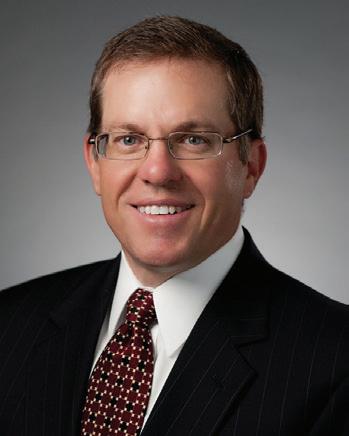
Glen Allen firm Keiter has promoted MIKE GrACIK, CPA, to managing partner, JuLIE GuSTAVSSoN, CPA, to chief operating officer, JEN FLINCHuM, CPA, to tax department leader and CHrIS WALLACE, CPA, to audit department leader.
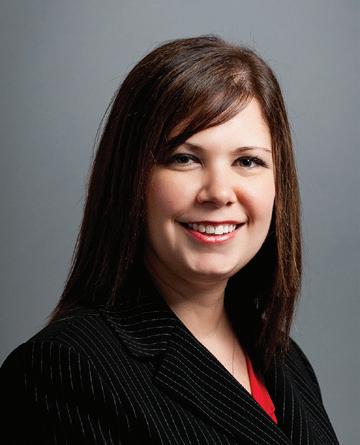
PEGGY SHErrY, CPA, has been named deputy commissioner for Operations Support at the U.S. Internal Revenue Service (IRS).
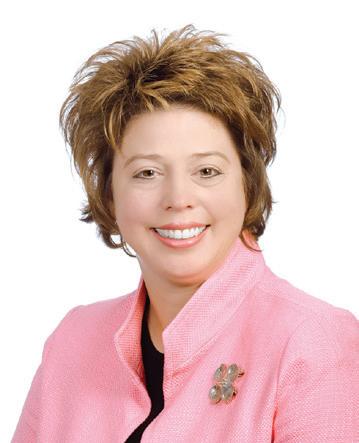
MArK WooLWINE, CPA, is moving to the New River Valley office of Brown Edwards.
The Accounting & Financial Women’s Alliance honored KAY GoTSHALL, CPA, with its Outstanding Achievement award. She is a senior manager at Keiter in Glen Allen.
CHIP HELME, CPA, managing partner at Thompson Greenspon & Co. in Fairfax, was selected as a delegate to CPAmerica International’s 2013 Leading Partners Retreat.
SIrENA JoHNSoN, CPA, principal at Thompson Greenspon & Co. in Fairfax, was honored with the George Mason University (GMU) School of Management Alumni Service Award, recognizing alumni who have demonstrated professional achievement and outstanding service to GMU and the community.
The Washington Business Journal named ED oFFTErDINGEr, CPA, executive managing partner of Baker Tilly Virchow Krause, as one of the region’s most influential business leaders.
KoSITZKA, WICKS & Co. is celebrating its 30th anniversary and has moved to new offices at 5270 Shawnee Road, Suite 250, in Alexandria.
WILLIAM b. MAY Jr. CPA, has moved to new offices at 3761 Westerre Parkway, Unit F, in Henrico.
THE VSCPA TIDEWATEr CHAPTEr collected 238 pounds of food for the Foodbank of Southeastern Virginia and the Eastern Shore during its CPE event Sept. 18. n
The VSCPA is accepting volunteers for various opportunities at different times throughout the year, although some opportunities are open year-round. Volunteer opportunities currently open are:
State & Local Government Conference Planning Task Force
Nonprofit Conference Task Force
VSCPA Chapter Officers
You can sign up for the following volunteer opportunities in March and April:
Industry Conference Task Force
Employee Benefits Conference Task Force
Educators’ Symposium Task Force
Visit www.vscpa.com/VolunteerSchedule to sign up for your desired opportunity. n
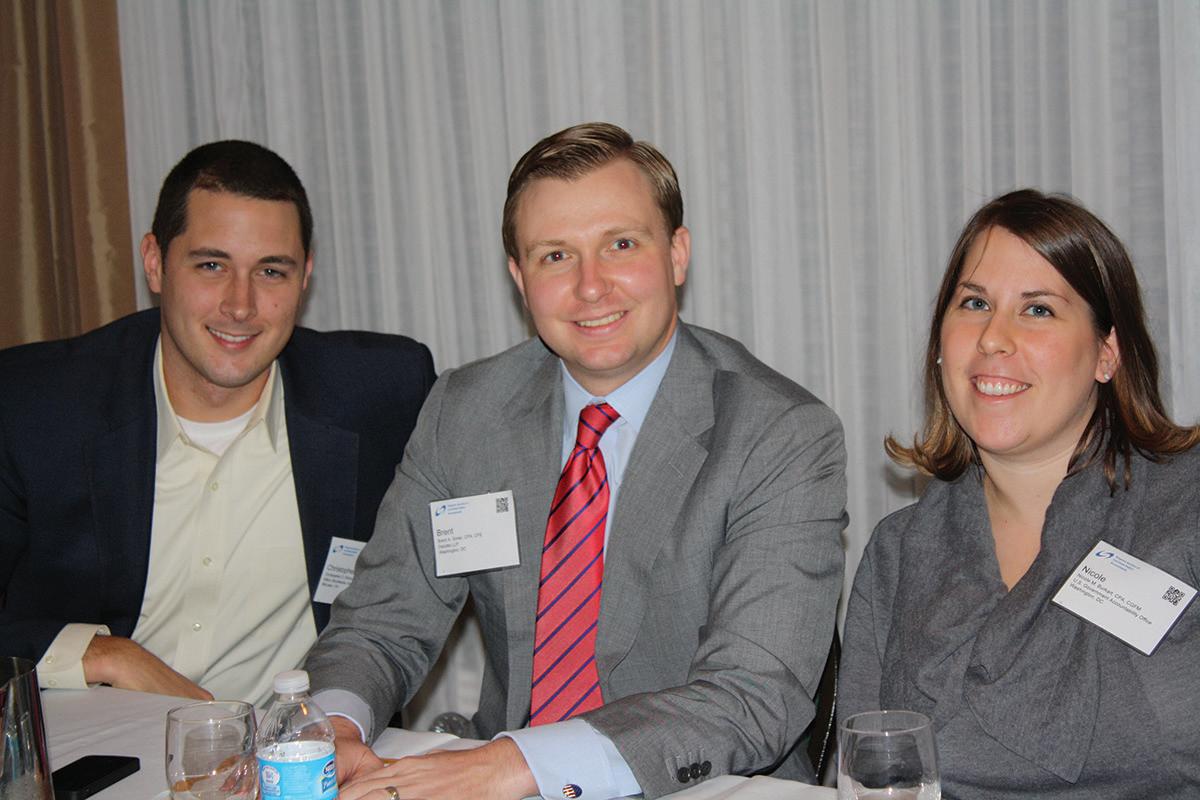
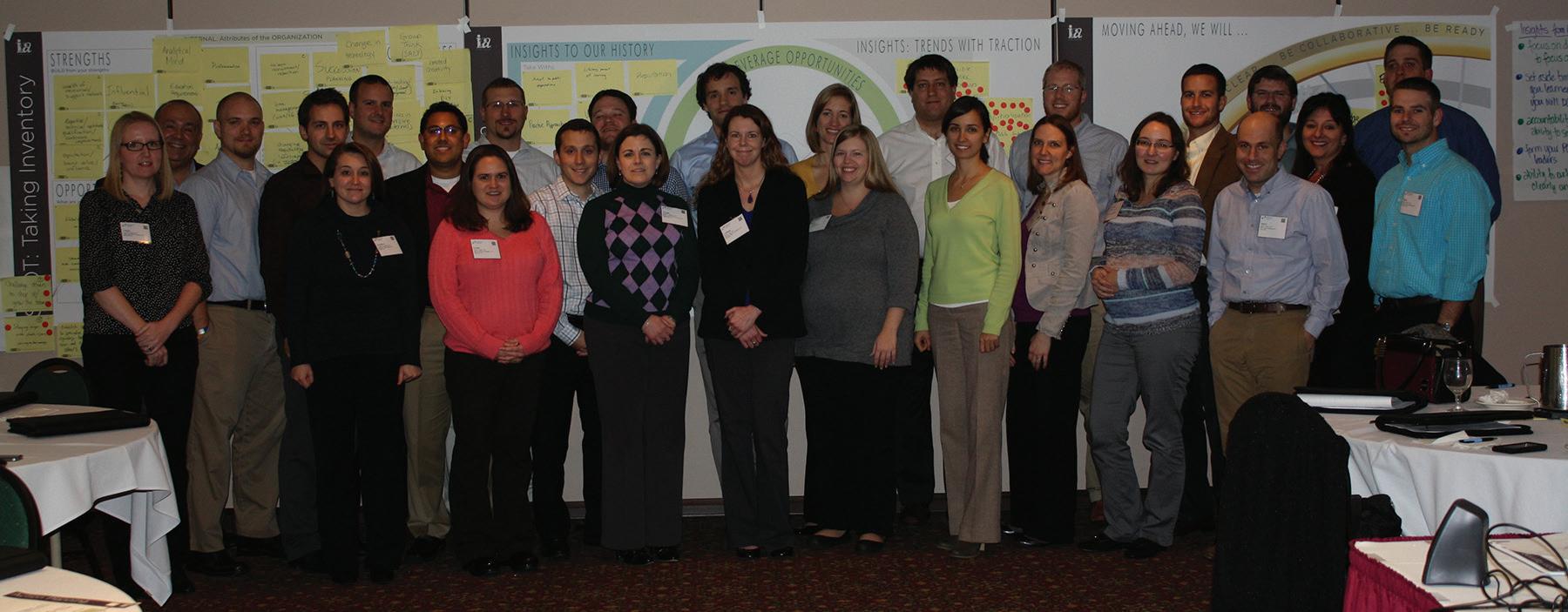
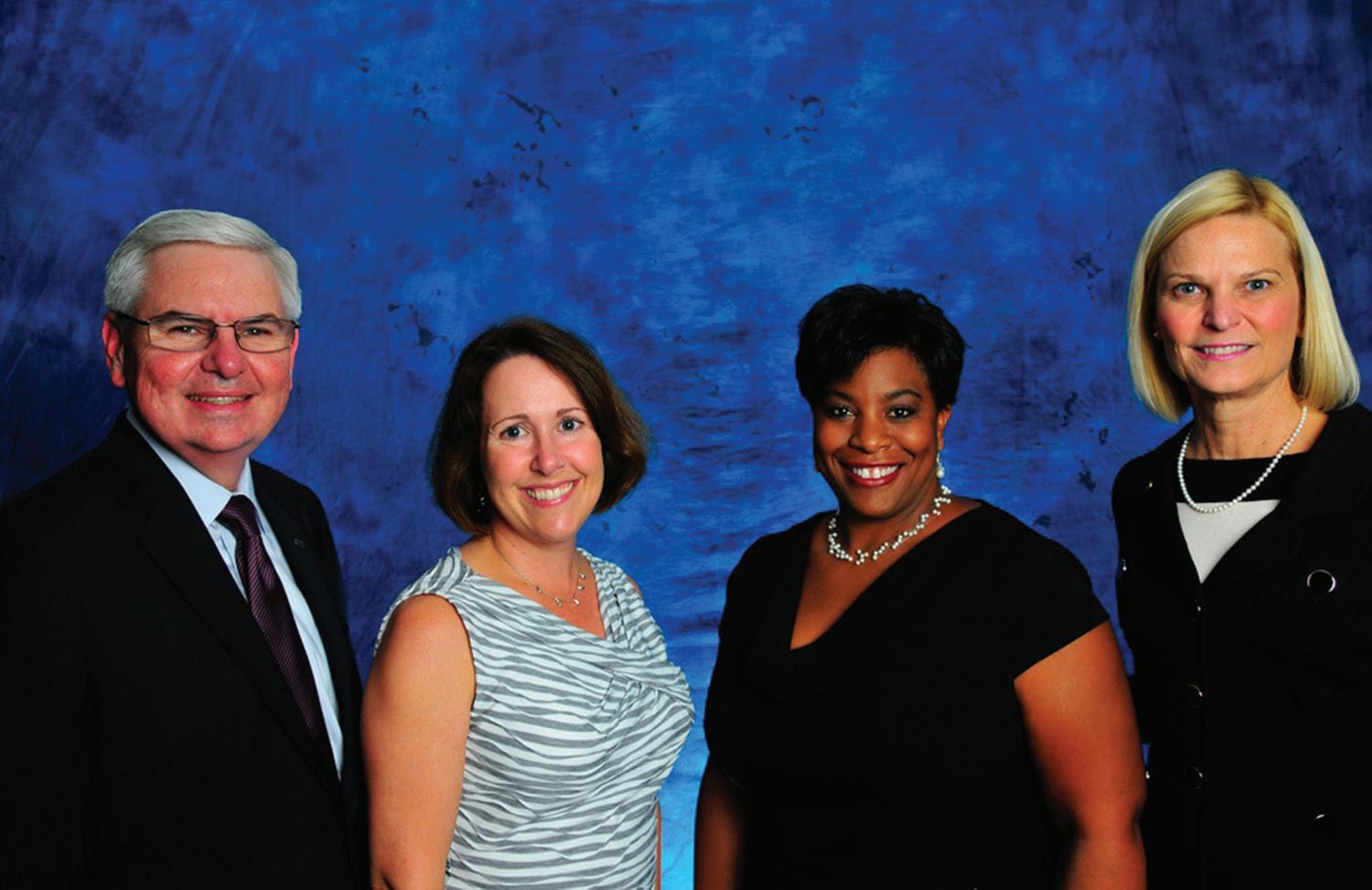
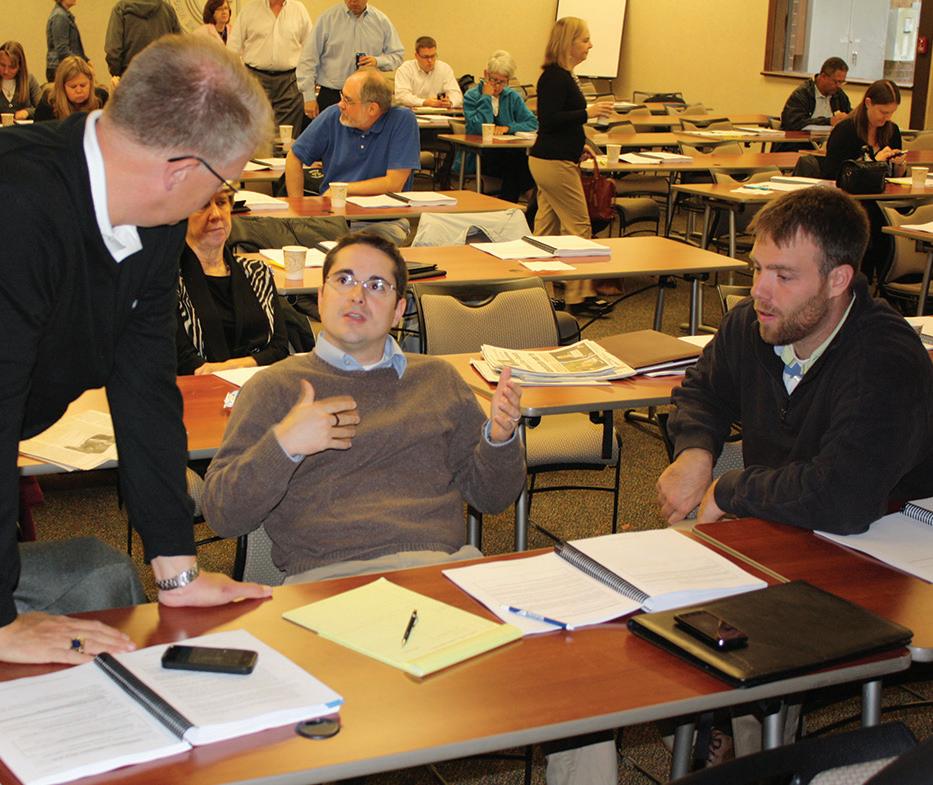
Left to right: Amy Mawyer, Jenny Hansen Chu, CAE; Jennifer Harris; Julia Henderson; Tina Lambert, CAE; Jen Syer; and Valerie Vaughn
Vice President, Strategy & Development AMY MAWYEr marks her 20th anniversary with the VSCPA on Feb. 17.
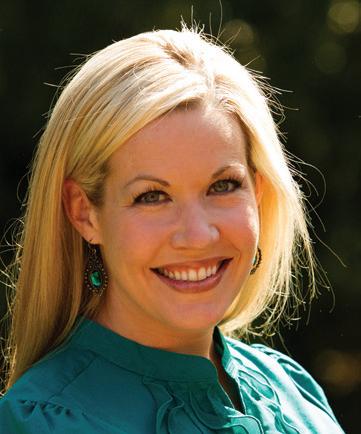
Two VSCPA staff members celebrate their 14th anniversary with the VSCPA: Technology Director JEN SYEr on Jan. 10 and Vice President of Member & Public Relations TINA LAMbErT, CAE, on Feb. 7.
Marketing & Communications Director JENNY HANSEN CHu, CAE, marks eight years with the Society on Jan. 9.
Conference Manager VALErIE VAuGHN celebrates her third anniversary with the VSCPA on Feb. 7.
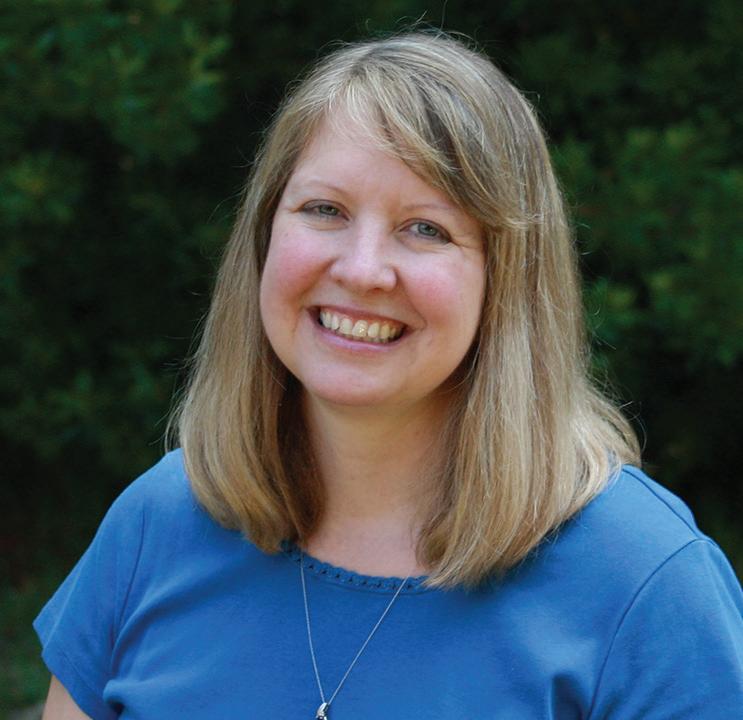

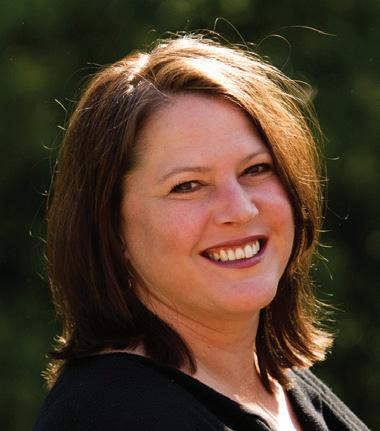
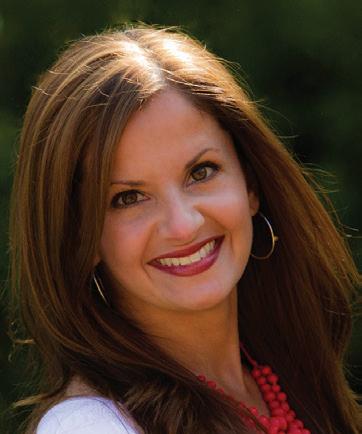
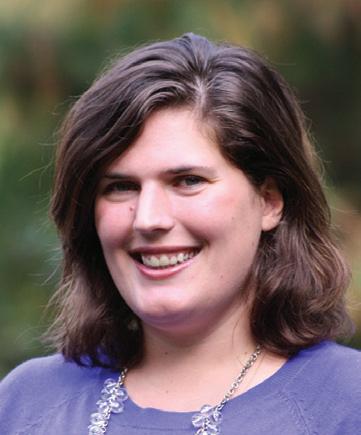
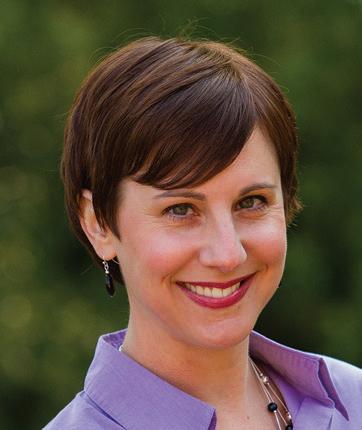
JENNIFEr HArrIS has moved into the marketing manager position at the VSCPA.
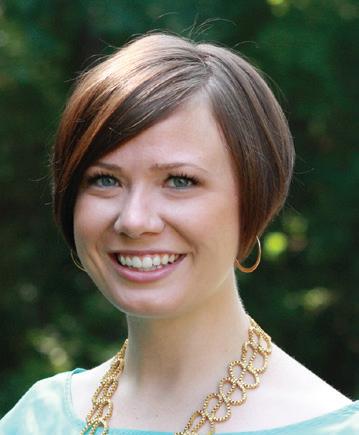
JIM bErrYMAN has joined the VSCPA as business development associate and JuLIA HENDErSoN is the new marketing specialist. She previously worked for the Partnership for Nonprofit Excellence. Welcome to the team!
Marketing & Communications Manager AMALIA MELIS and Executive Assistant PAMELA robErSoN have left the VSCPA. Best wishes! n
PoSITIoN: Finance Director
bIrTHPLACE: Waukegan, Ill.
FAMILY: Daughters, Emily (13), Genna (10) and Bridget (8); son, Jake (6)
FAVorITE VACATIoN: The happiest place on Earth — Disney World!
rECENTLY rEAD booK: Just started re-reading "Little Women" by Louisa May Alcott, my very favorite book.
PrEVIouS Job: President of the Cultural Arts Center at Glen Allen. And before that, the VSCPA. I was here at the VSCPA for 12 years and served as CPE director and deputy executive director. I left after having
my first child because I didn’t want to travel as much. I went to The Cultural Arts Center at Glen Allen, which was a new arts center near my home. They needed someone to build the business through programming, fundraising and strategic planning. It was a wonderful, beautiful place to work. I felt really good about what I accomplished there, but after having my fourth child, I was ready to have a more stable schedule. As good fortune would have it, the VSCPA had an opening for the finance director position.
FAVorITE PArT oF MY Job: Budgeting! I just love budgeting — it’s all a big plan and I am all about a plan.
WHAT ATTrACTED You To ACCouNTING? VSCPA members. When I started here in 1989, I was not a CPA. But after a few years of working with members and seeing what great people they are and all the opportunities accounting offered, I decided to complete the coursework and sit for the Exam. n
>> StAFF SPotlIGHt: betH bICkFoRD, CPA
VSCPA 100% Member Firms show their commitment to their employees, the profession and the association. A 100% Member Firm is simply a Virginia CPA firm or company that has all of its CPAs enrolled as members in the VSCPA.
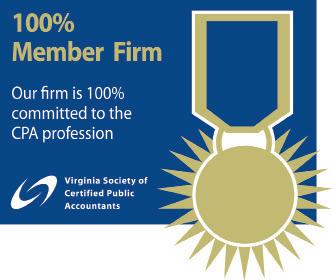
Interested in being listed as a 100% Member Firm? Contact VSCPA Member Relations Director
Brenda Fogg at bfogg@vscpa.com or (804) 612-9409.
A.F. Thomas & Associates, PC
Anderson & Reed, LLP
Anderson, White & Company, PC, CPAs
Andrews, Barwick & Lee, PC
Barnes, Brock, Cornwell & Heilman PLC
Beale & Curran, PC
Beck & Company, CPAs, PC
Bennett, Atkinson & Associates, PC
Biegler & Associates, PC
BlackHeath Company, PLC
Bowling, Franklin, & Co., LLP
Boyce, Spady & Moore PLC
Britt & Peak, PC, CPAs
Bruce, Renner & Company, PLC
Bullock & Associates, PC
Burdette Smith & Bish LLC
Burgess & Co., PC, CPAs
Cameron, Moberly & Hamrick, PC
Charles S. Pearson Jr., CPA
Charles W. Snader, PC
Cherie A. James, CPA, PLC
Chesapeake Accounting Group PC
Christopher A. Enright, CPA, PLC
Cole & Associates CPAs, LLC
Coley, Eubank & Company, PC
Corbin & Company, PC
Craver, Green and Company, PLC
Creedle, Jones and Alga, PC
CST Group, CPAs, PC
Dalal & Company
David L. Zimmer CPA PC
Diane Y. Smith CPA PC
Didawick & Company, PC
Digital Benefit Advisors
Donald R. Pinkleton, CPA
Donald W. Coleman, CPA, Inc., PC
Douglas L. Thompson, CPA PLLC
Duvall Wheeler, LLP
Eggleston & Eggleston, PC
Elmore, Hupp & Company, PLC
Everett O. Winn, CPA, PLC
First Capital Bank
Frank Edward Sheffer & Company
Fritz & Company, PC
Garland & Garland, CPAs, PC
Garris and Company, PC
G.L. Roberson CPA, PLLC
Graham and Poirot, CPAs, LLC
Gregg & Bailey, PC
Gregory & Associates, PLLC
Gurman & Company, PLLC
Hantzmon Wiebel
Harris, Hardy, & Johnstone, PC
Harris, Harvey, Neal & Co., LLP
Henley & Henley, PC
Henry R. Hortenstine III, CPA, PC
Hogan & Reed, PC, CPAs
Holland & Brown LLP
Homes, Lowry, Horn & Johnson, Ltd.
Honeycutt & McGuire CPAs
Hughes & Basye, PC
Hunt & Calderone, PC, CPAs
J. Goddin & Associates, PC
Jay E. Reiner CPA PLLC
John M. Watkins, CPA
Johnson, Equi & Co., PLC
Jones, Adams & Delp, PC
Jones, Madden & Council, PLC
Jones & McIntyre, PLLC
JS Morlu, LLC
Katherine L. Foley CPA, PC
Keiter
Kositzka, Wicks & Company
Kris McMackin CPA
L.P. Martin & Company, PC
Lane & Associates, PC
Larry D. Greene CPA PC
Lauren V. Wolcott, CPA, PC
Lent & Hawthorne, PC
M. Lee Winder & Associates, PC
Maida Development Company
Mallard & Mallard CPAs, LLC
Malvin, Riggins & Company, PC
Martin, Beachy & Arehart, PLLC
McPhillips Roberts & Deans PLC
Michael B. Cooke, CPA, PC
Michael R. Anliker, CPA, PC
Miller Foley Group
Mitchell, Wiggins & Company, LLP Moss & Riggs, PLLC
Murray, Jonson, White & Associates, Ltd., PC Nicholas, Jones & Co., PLC
Norris & Associates, PC Paul Mitchell CPA CFP
PBMares, LLP
R.T. McCalpin & Associates Renner & Company, CPAs, PC Robinson Consulting Group
Roger L. Handy, PC Rubin, Koehmstedt & Nadler, PLC Russell, Evans & Thompson, PLLC Rutherford & Johnson, PC Salter & Associates, PC Saunders, Matthews & Pfitzner, PLLC Scheulen, Patchett & Edwards, PC Sells Hogg & Associates CPAs, PC Spencer, Hager & Mosdell, PC Spitler, Stephens & Associates PLLC Stephen Merritt CPA, PC Stephen T. Shickel, CPA, PLC
Steve Guy & Associates, PC Steve Walls & Associates, PLLC Strickland & Jones, PC Sullivan, Andrews & Taylor PC
Terry L. Jones, CPA, LLC
The Cahill Group, LLC
The Davidson Group, PC
Thomas E. Fraley, CPA
Thompson, Greenspon & Co., PC
Tongelidis Consulting, LLC
Updegrove, Combs & McDaniel, PLC Valderas & Fishel, PC
Verus Financial Partners
WalkerChaney, CPAs Wall, Einhorn & Chernitzer Wells, Coleman & Company, LLP
Wilkinson Consulting & CPA PLC William B. May Jr., CPA, PC Wineholt & Associates, PC
Yancey, Miller & Bowman, CPAs PLLC Yount, Hyde & Barbour, PC
Compiled Nov. 15, 2013. Check www.vscpa.com/100Percent for a complete, up-to-date list.
“Being in this career, I’ve seen how I was able to move up and get to my current level,” he said. “I saw that there’s a lot you can do. Many people don’t know that. A lot of students think that accounting is a boring field.
“I actually had several people I convinced to get into accounting myself. They were just like me — I had friends who came from other countries, from Azerbaijan or Russia or other places. Just like my brother helped me to pick the finance field, they had no idea what to choose, so I convinced several of them to join the accounting field.”
Shahtakhtinskiy entered the accounting field and came to the United States for the same reason — as a way of taking control of his career. “You can do pretty much anything you want in this country,” he said. “It all depends on you.”
Educational Foundation donor and a member of the Foundation's Board of Directors, once needed a little push to get his accounting career going. Now he’s helping provide that incentive to Virginia accounting students.
Shahtakhtinskiy’s accounting odyssey started in 1998, when he moved to the United States from his native Azerbaijan at the age of 21. He followed his brother, Elmar, to Louisiana, where he earned his master’s degree from the University of New Orleans.
Western oil companies had flooded into oil-rich Azerbaijan after the collapse of the Soviet Union, and the burgeoning industry had a profound effect on the Shahtakhtinskiy family. An oil company brought Elmar to the United States as an exchange student, and he now works at Coca-Cola as a revenue forecasting manager.
Vugar, meanwhile, earned his bachelor’s degree in management from the Azerbaijan State Oil Academy in his hometown, the capital city of Baku. He had a job in Baku when Elmar started working on him to come to the United States.
“In my last year of my bachelor’s degree, I had a job already in Azerbaijan with a large retail company,” Vugar said. “I started working and then my brother started telling me I needed to come and get my master’s degree. It didn’t take too much to convince me.”
He now works as the corporate controller at CORT Business Services in Chantilly, where he has helped give some of his compatriots the same career help he got from his brother. One fellow Azerbaijani, Kamran Mammadov, is his assistant controller at CORT.
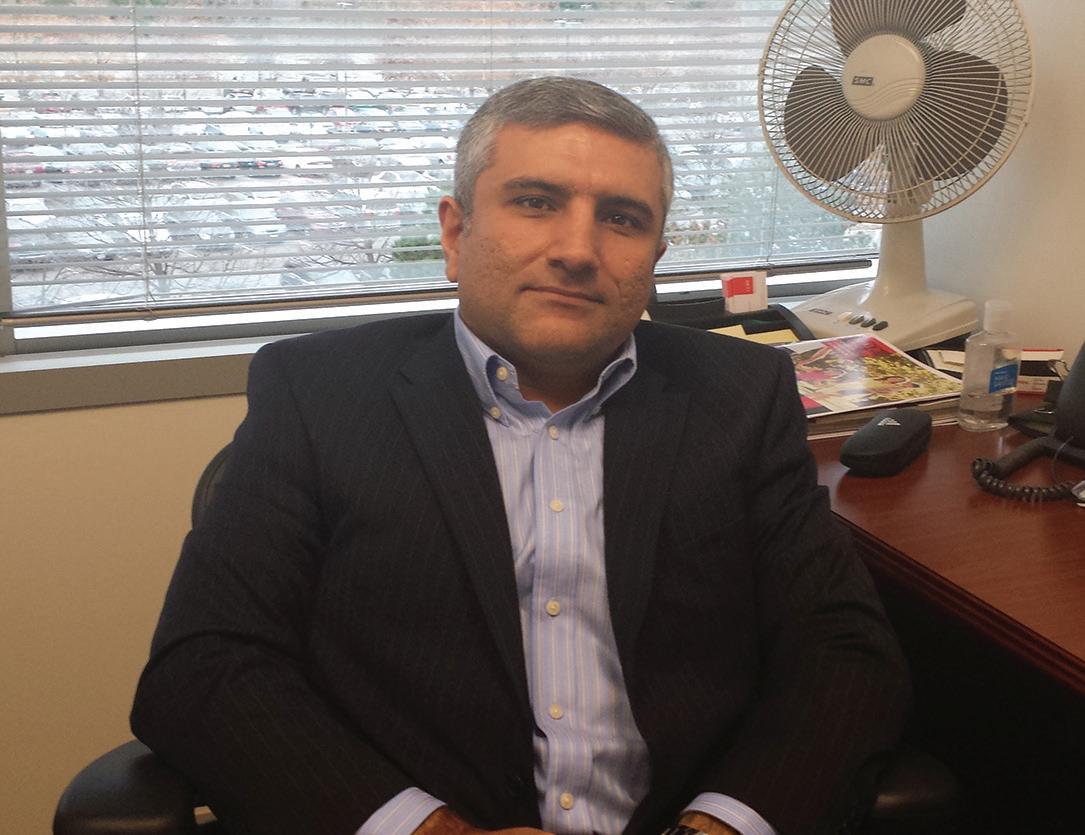
He’s made a home for himself in the United States, first in New Orleans and now in the Washington, D.C., metro area. He and his wife, Gunay, have a 4-year-old son, Fareed. And he likes to get out of the urban sprawl on the weekends to hunt deer and turkey, a hobby that goes well with his contemplative nature.
“You have to be patient and sit, sometimes for six or seven hours,” he said. “All you have is you and the woods. Sometimes you don’t even see a deer. You can’t do it if you don’t like that. It’s not about having to shoot something every time you go. Every 10 times you go, you might get lucky three times.
“You have to enjoy spending time in the woods. It’s a great time when you can think about new ideas and relax and forget about many other parts of your daily routine.” n
College students, get a head start on lining up scholarships for 2014–2015! Each year, the VSCPA Educational Foundation awards scholarships to deserving accounting students at colleges and universities across Virginia. Scholarships for the 2014–2015 academic year range from $1,000 to $5,000. Visit www.vscpa.com/ Scholarships to apply today. All applications must be submitted online by April 1, 2014 n
buYING or SELLING AN ACCouNTING PrACTICE? Want a “clean exit?” Experience The Seamless Succession™ — to facilitate the absolute best transfer of your accounting practice. Learn more about our unique, 5-step process … and view our most up-to-date opportunities for purchase. Please visit www.PoeGroupAdvisors.com or email us at info@poegroupadvisors.com. 888-246-0974
the VSCPA now offers online classifieds! Post and search in these categories:
Monthly posting starts at $250. Plus, manage your ad online, include your logo and more!
Prefer printed classifieds in Disclosures? Contact us at classifieds@vscpa.com or visit www.vscpa.com and click on “Advertise, Sponsor or Partner” under “For Members."
VA1047 Middle Peninsula, VA $225,000 VA1045 between Charlottesville and Richmond VA $275,000 VA1052 North E. of Richmond, VA $295,000 VA1053 Richmond, VA $450,000 VA1054 Virginia Beach, VA $425,000 VA1051 Richmond , VA $145,000
Follow us on Twitter @ poegroupadvisor or check out our blog @ www.poegroupavisors.com/blog/
NorTHErN VIrGINIA CPA SEEKS To ASSoCIATE WITH ENErGETIC CPA who is interested in the eventual takeover of the practice. Strong technical skills in both reporting and tax a must. Ideal candidate will be individual who is committed to working in public accounting and has started their own practice. Respond with resume and cover letter to: VSCPA CC #89, 4309 Cox Road, Glen Allen, VA 23060 or classifieds@vscpa.com.

available online at www.vscpa.com/
Michael Addis Cynthia Alsop Piyush Arora Eldo Bori Theresa Brookhart Cindy Cheung Brett Cranmer Nidia Cruz Jacqueline David Rebecca Donald Alice E. Dragoon-English Joseph Emswiler Heather Gallagher
Katherine Gaver Michael Gilreath Amanda Grivnovics Elizabeth Gurney Didier Hakizimana Colin Hannifin James Herald Eric Hittle Hope Jam Rachel Jones Leah Keller Tyler Lacefield Erica LeMon
Adam Lucariello Nicholas MacPhee Melissa Mayhew Jason McDaniel Marshall McEwan Andrew Melnick Joyce Montemayor Alexander Mundorff Esinam Nduom Anna Nganga Brian Nozolino Esther Pak Allison Pearman
Nicholas Peden Kyle Pryde Alesha Schillig Pratik Shah Thomas Shaughness Vinay Singh Stephen Spencer Michelle Suarez-Marill Lisa Tegethoff Oana Turton Richard Vari Anthony Wadsworth Tiffannie Williams
Nausheen Yusuf Kimberly Zingale
Zolkowski
List from October and November 2013. Compiled Dec. 2, 2013. n
Martha Mavredes, CPA, CGMA, just passed the one-year mark as the Virginia Auditor of Public Accounts (APA), but she has worked at that office for 30 years. The APA audits executive and legislative branch agencies in Virginia, as well as constitutional officers in each locality, and provides oversight for the audits of local governments in Virginia performed by CPA firms.

Richmond Kickers pro soccer. I always have season tickets and attend all of the preseason practices and matches.
PEoPLE DoN'T KNoW THIS, buT… I enjoy genealogy when I’m not looking at debits and credits. I was able to trace my ancestors on my mother’s side of the family back to William the Conqueror.
IS… Take it one day at a time. You have made a great career choice, but getting 150 hours of education and passing the Exam can be overwhelming if you only look at the end goal. You need to break it down into parts and have plans for each, and before you know it, you will have that certificate!
My cell phone. It not only lets me check in at work when necessary, but it’s my connection to my grown daughters and two granddaughters.
I WISH CPAS KNEW… How important their non-accounting skills are. The CPA Exam tests us on our technical knowledge, but our soft skills, such as communications and management, are just as important. We use them just as frequently, if not more often, than the technical skills.
I sat at a table in the Scope Arena in Norfolk for two and a half days, with my picture ID on the table, ready to “strike the pose” if the proctor came by to compare me to the picture. No calculators
were allowed, and trying to balance a Statement of Changes in Financial Position without one was a challenge.
I AM A CPA bECAuSE… I enjoy the variety it affords me. I became a CPA because of my love of numbers and how accounting helps to make sense of the business world. It has opened up a whole larger world in dealing with people and trying to help entities be their best. The possibilities are endless. n
